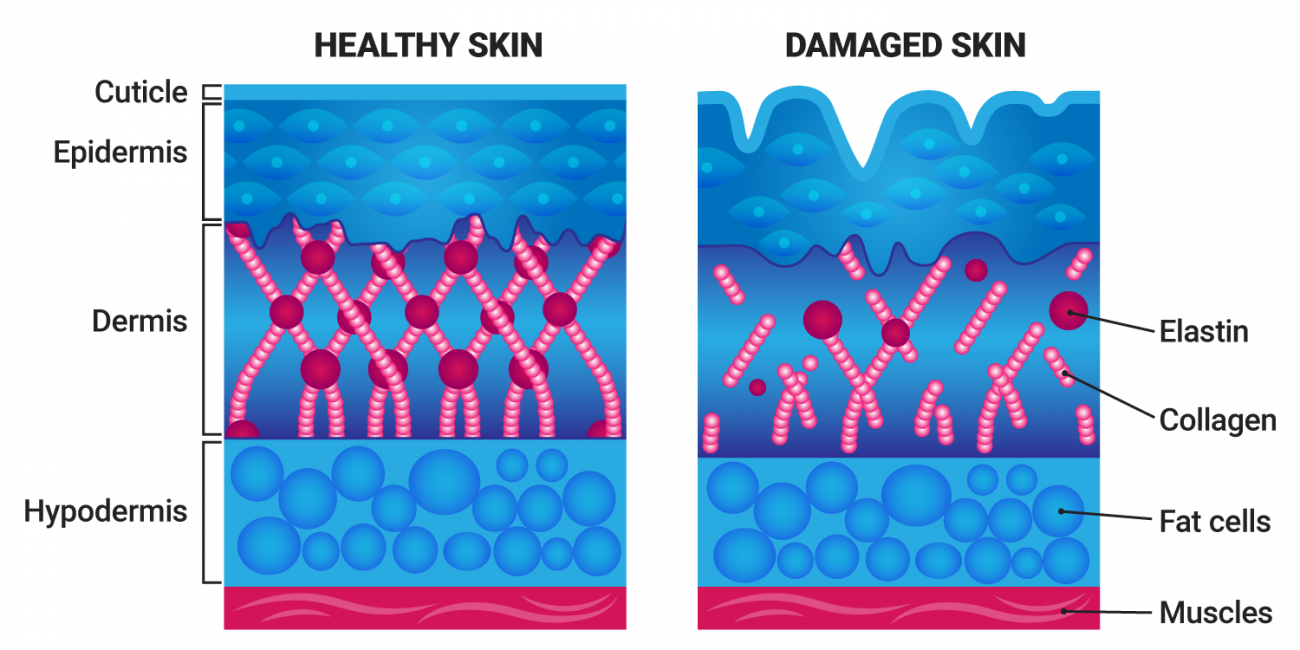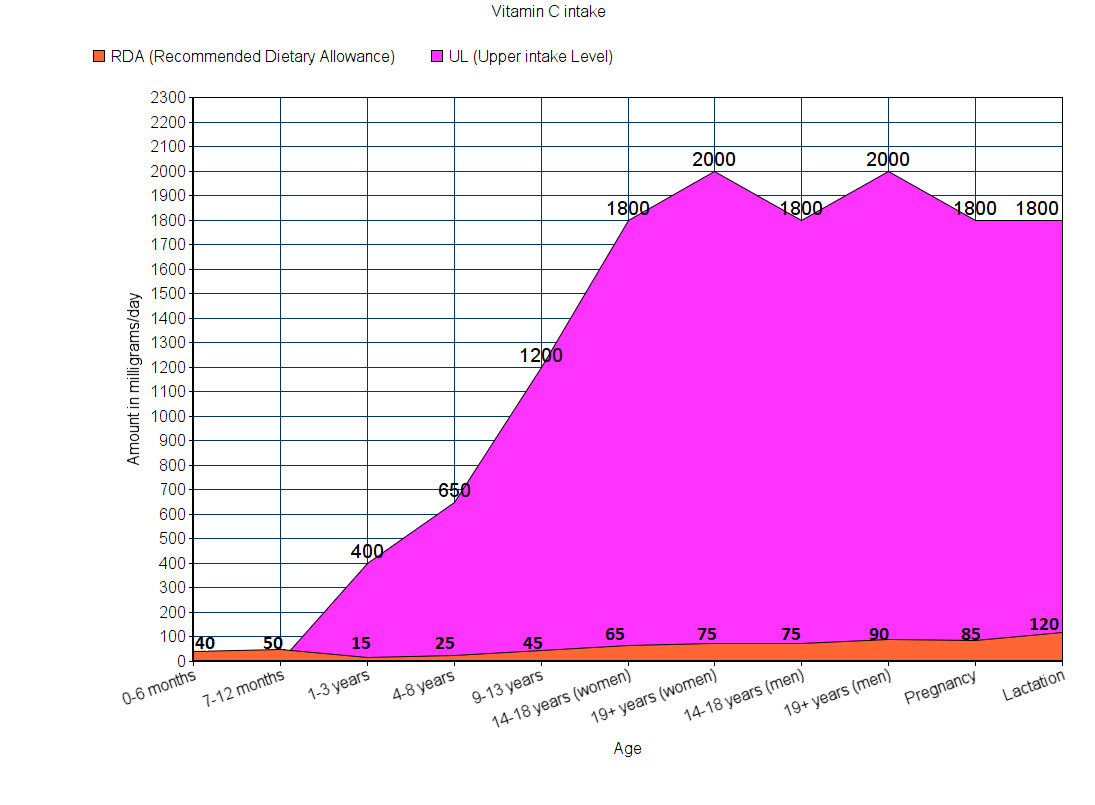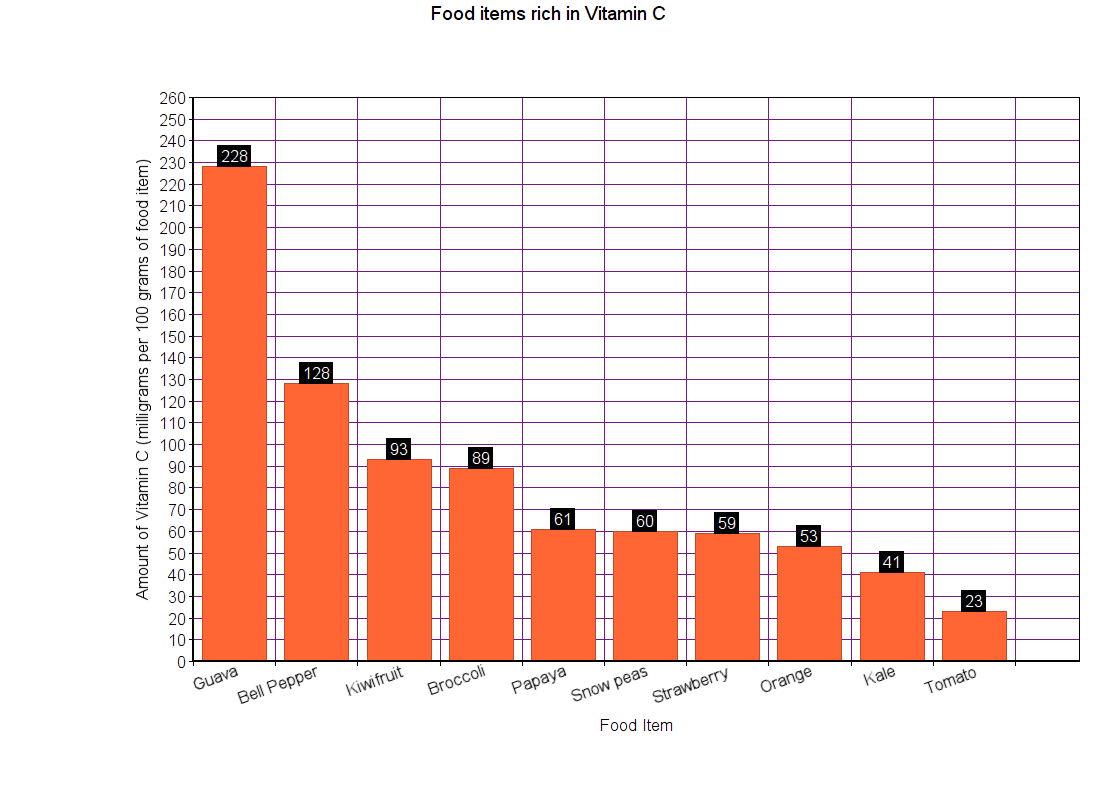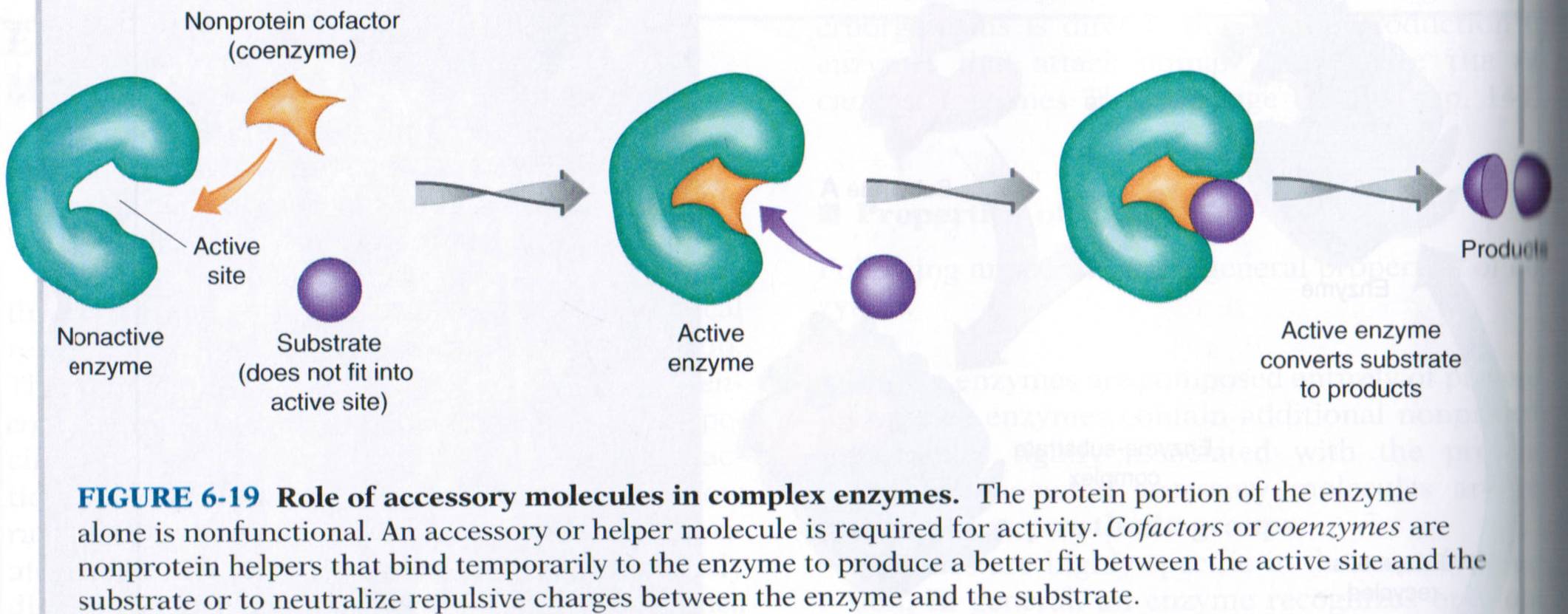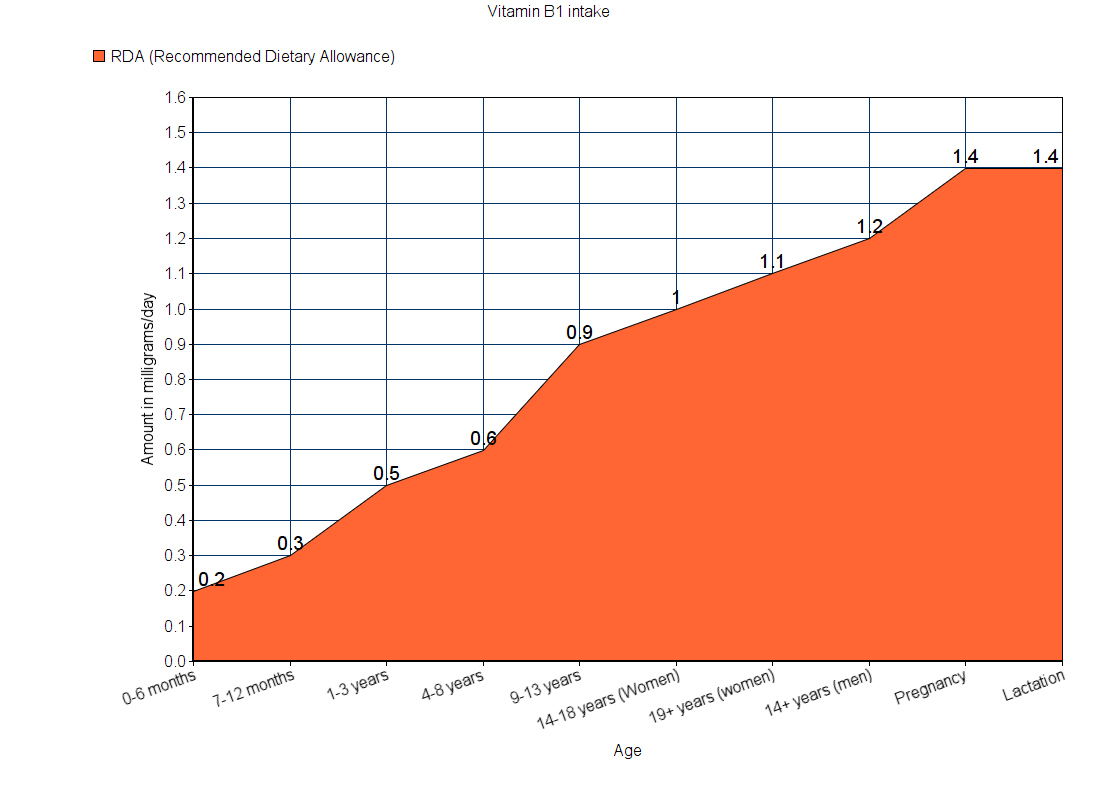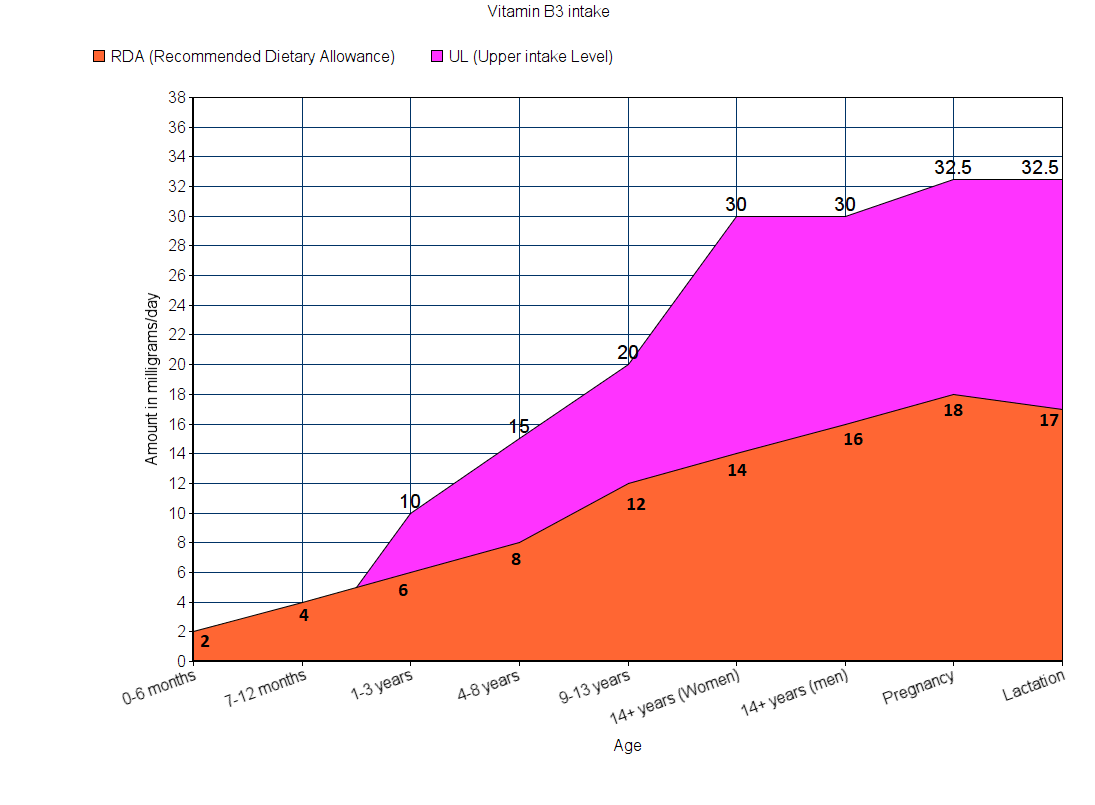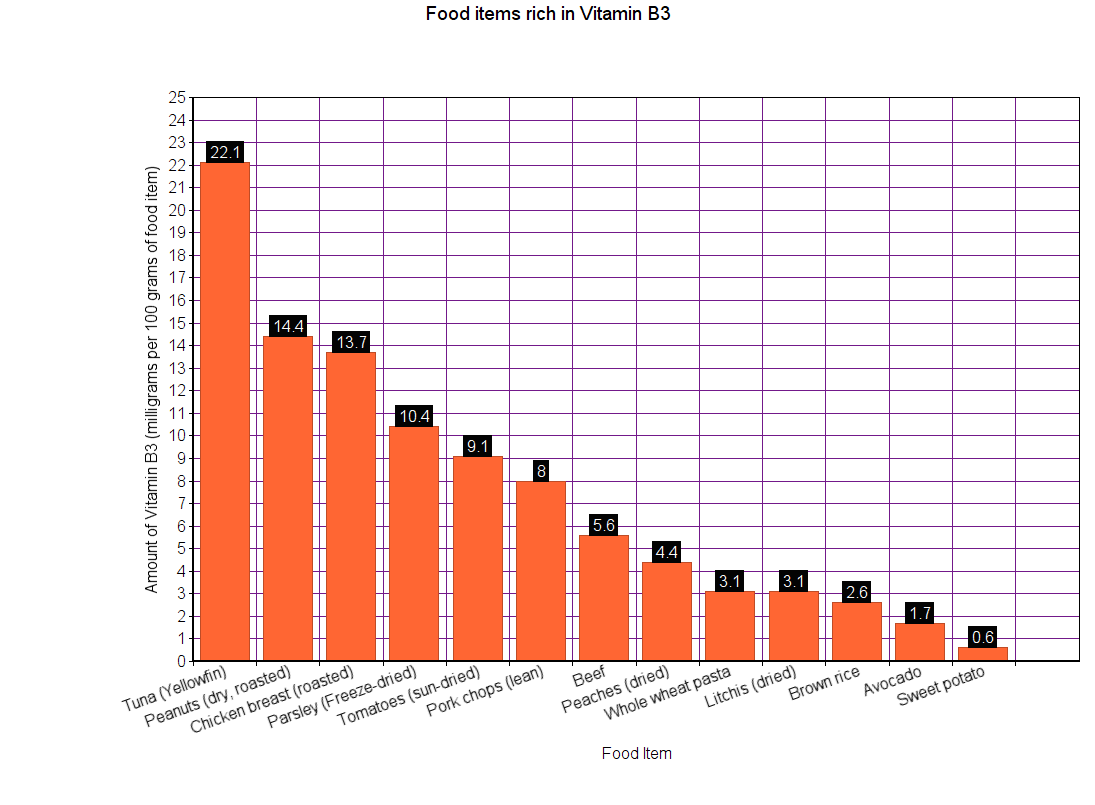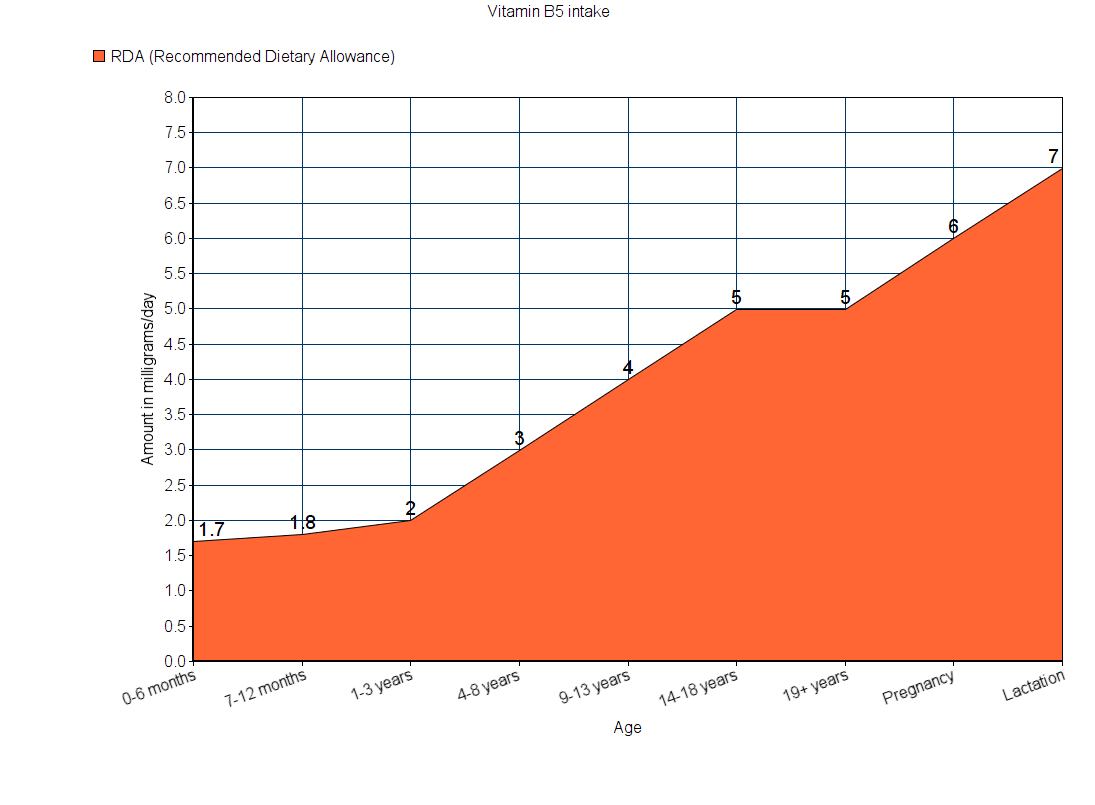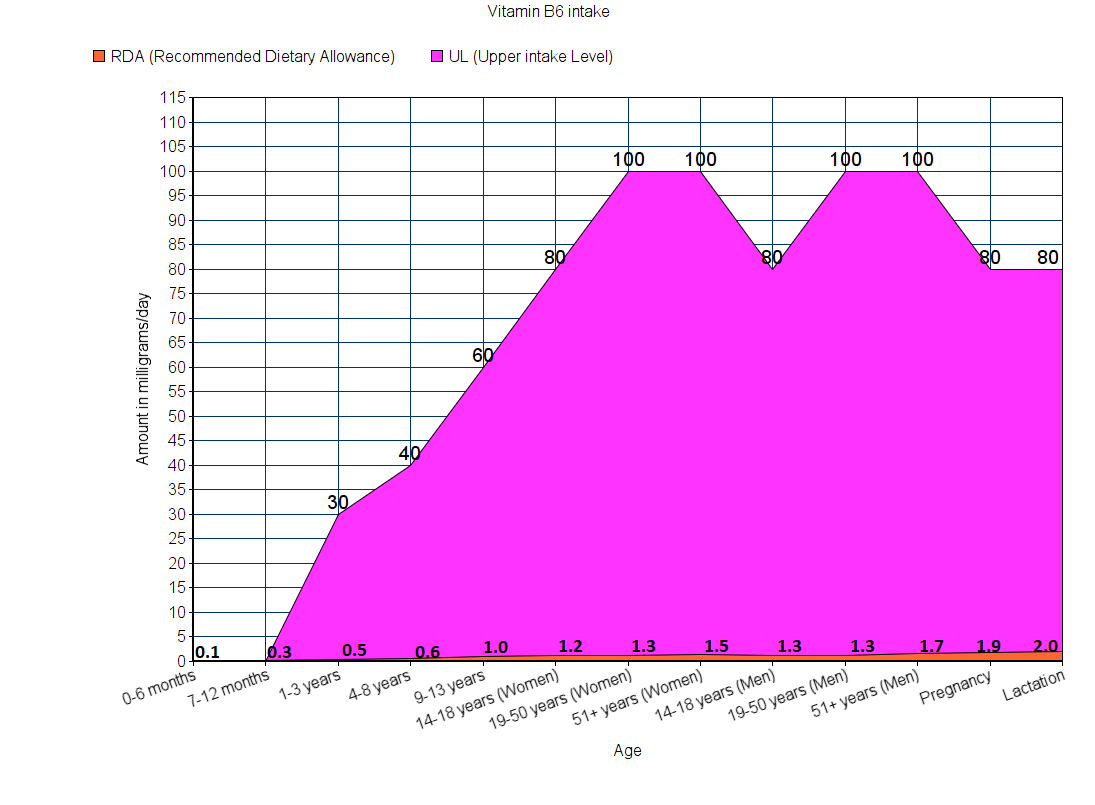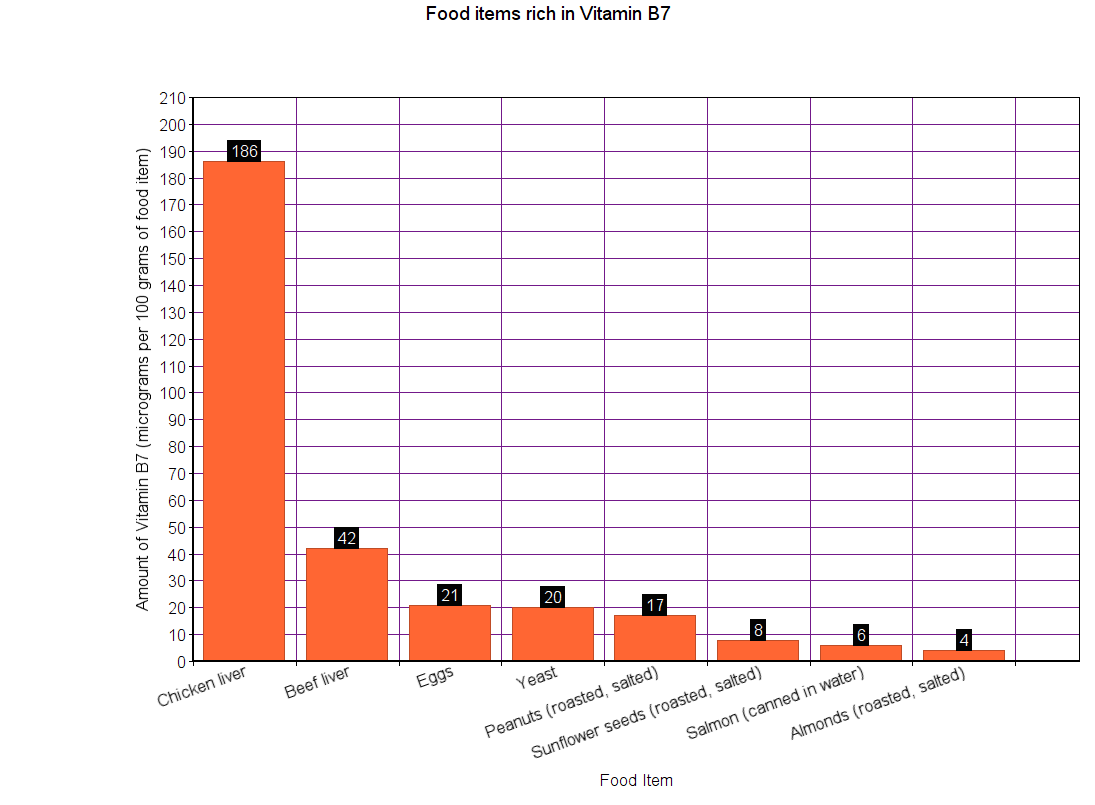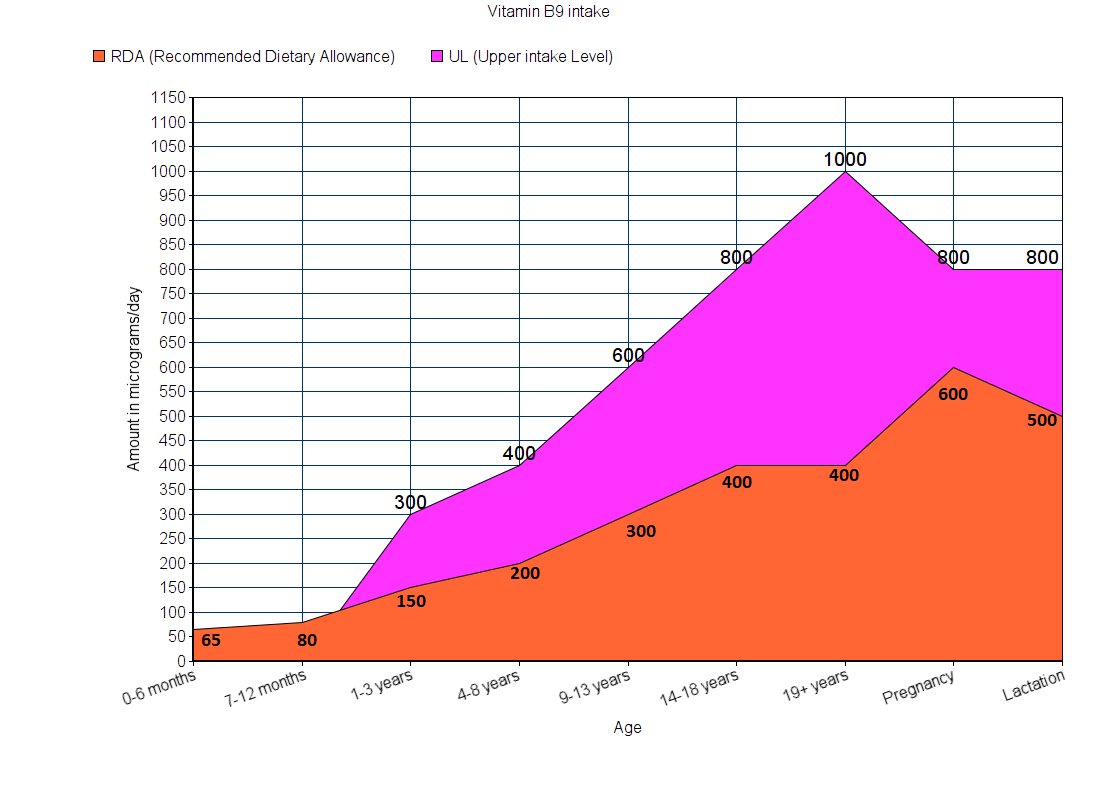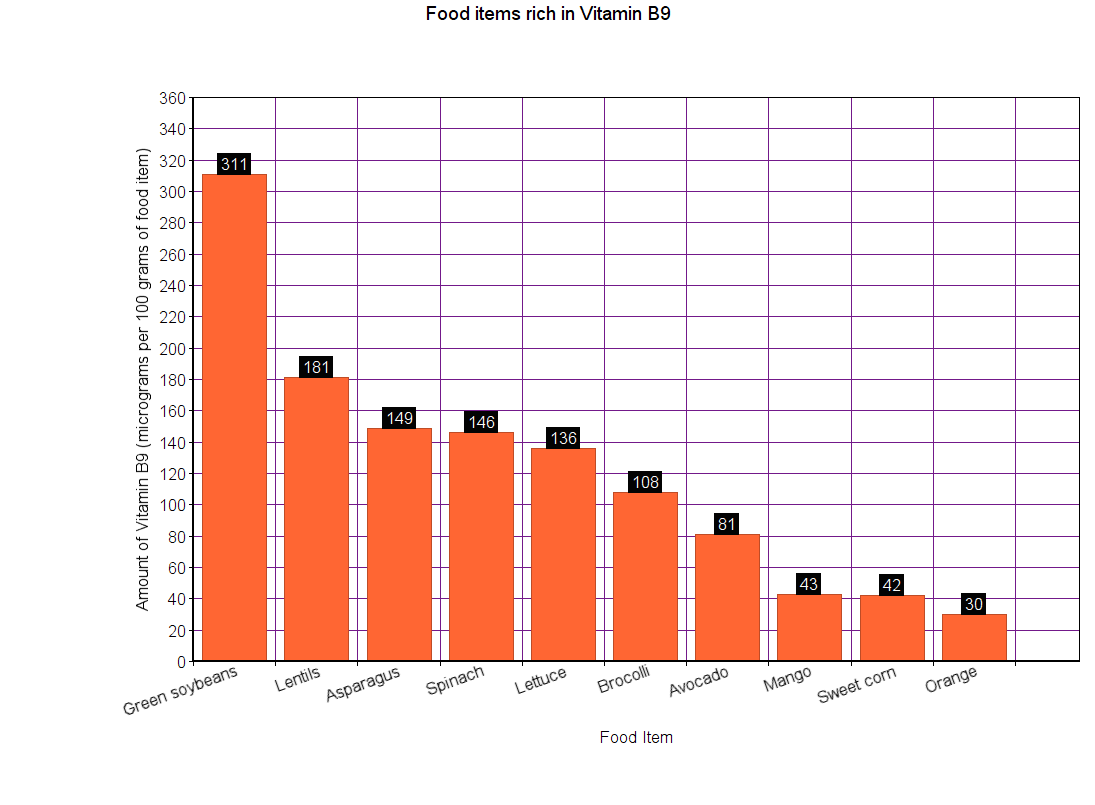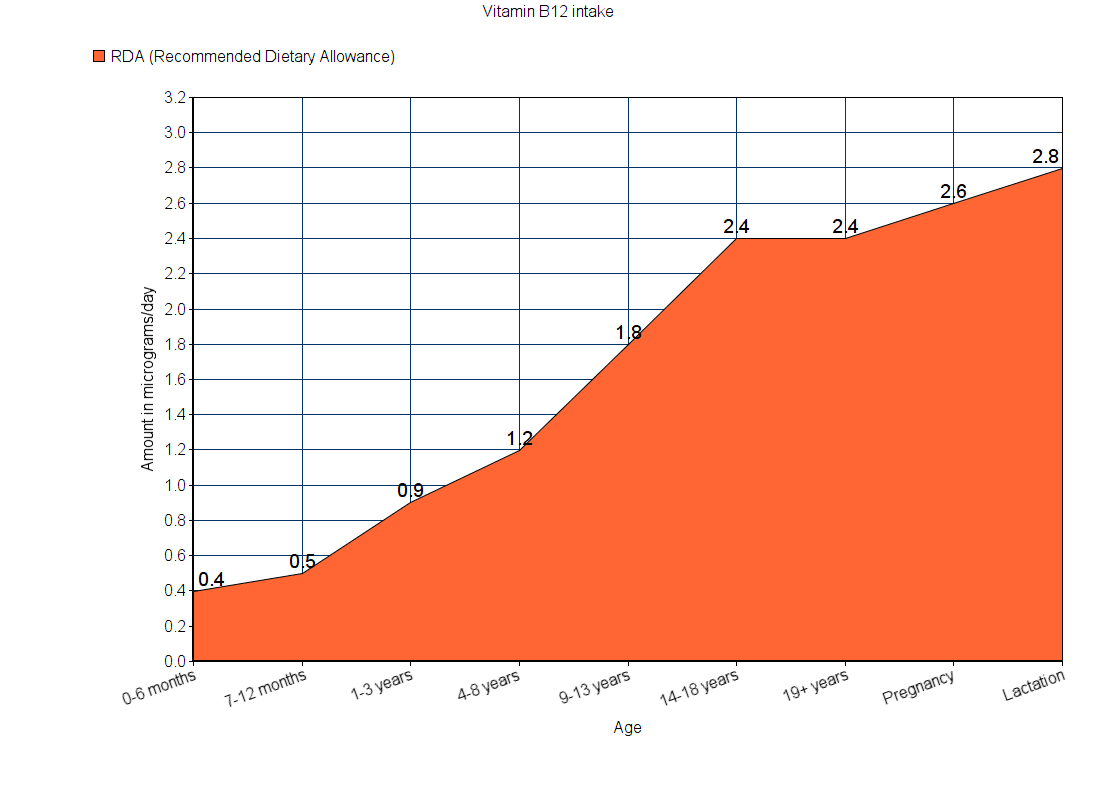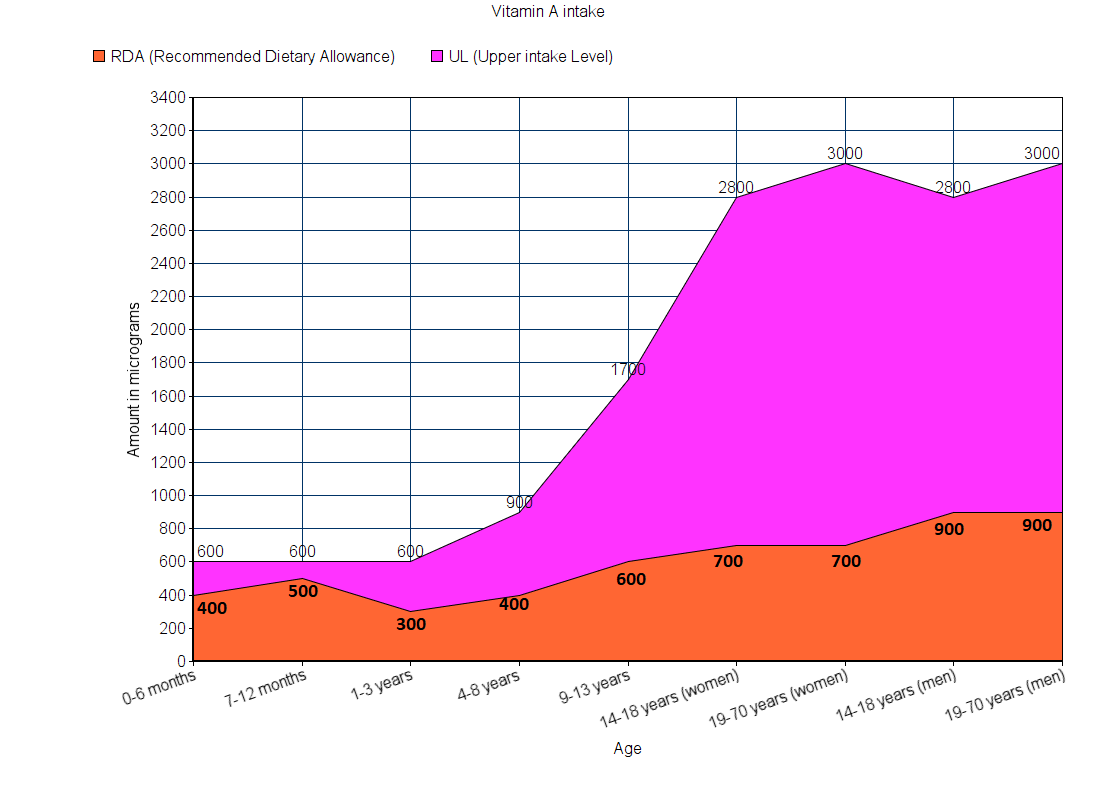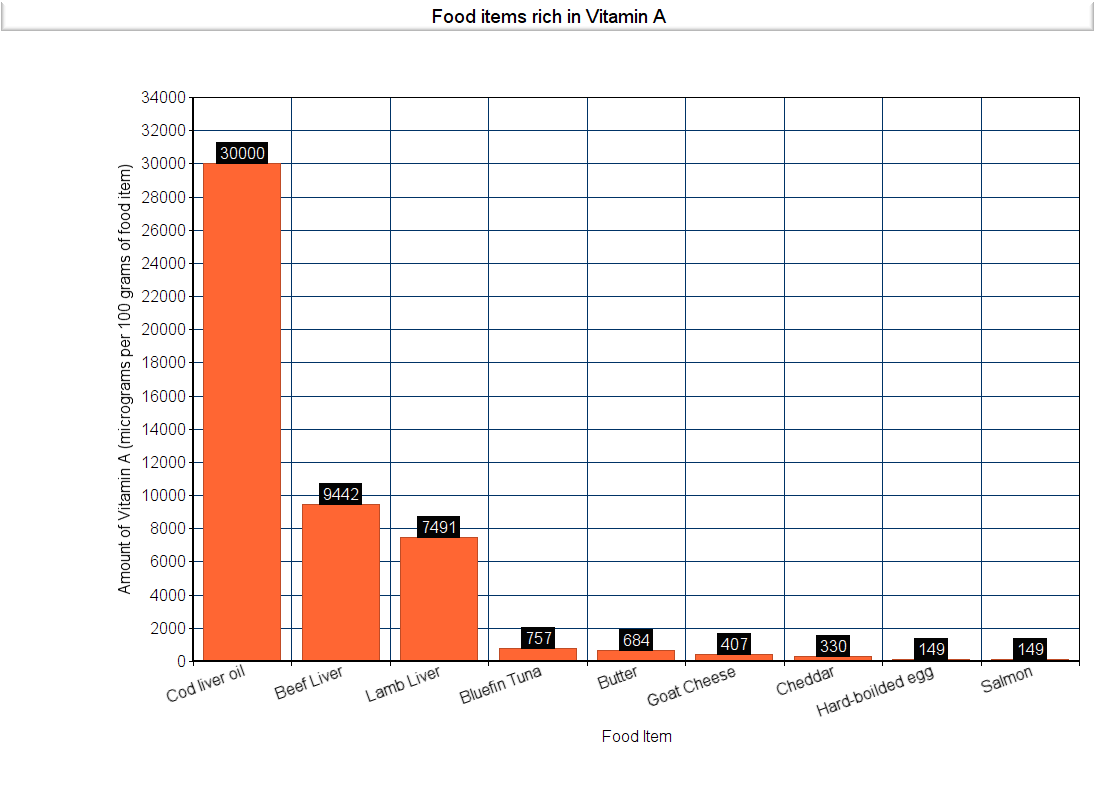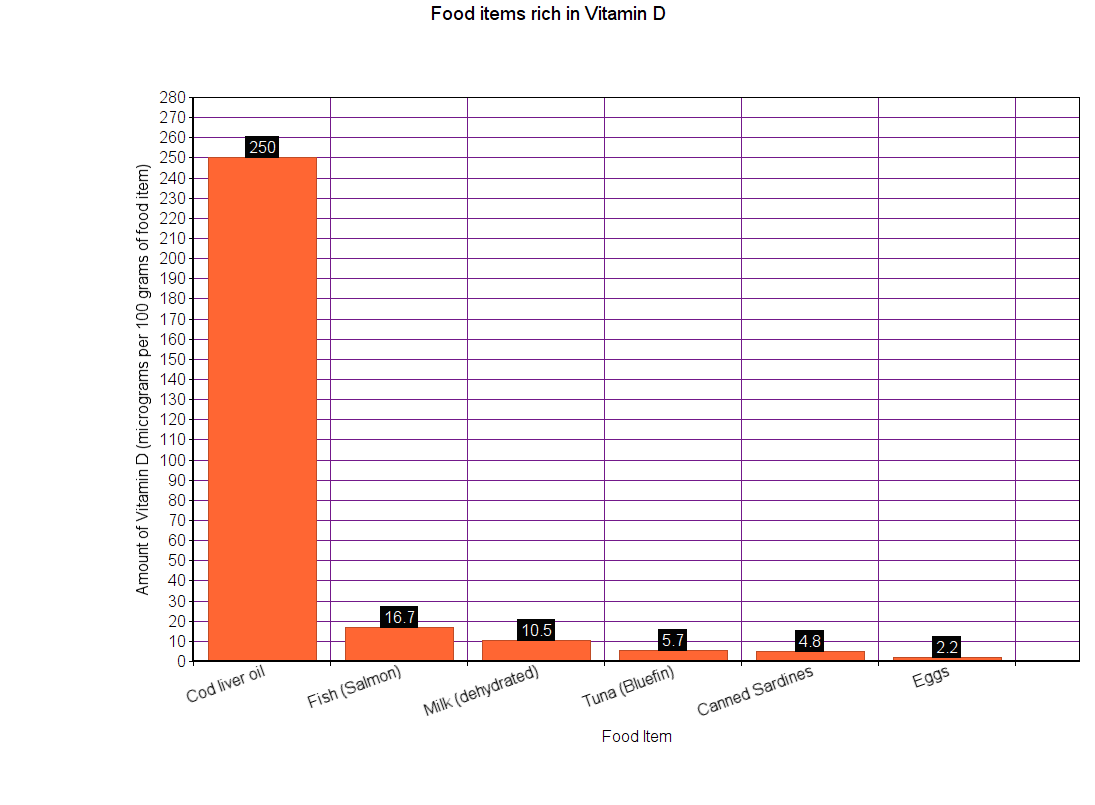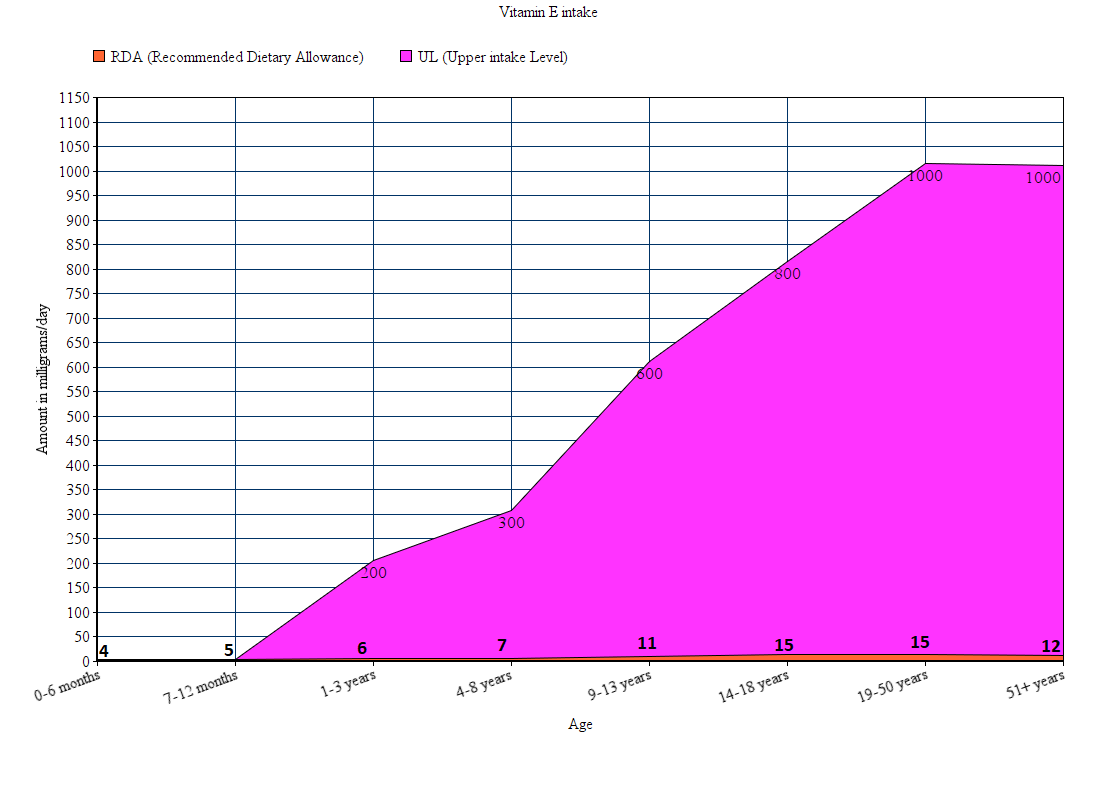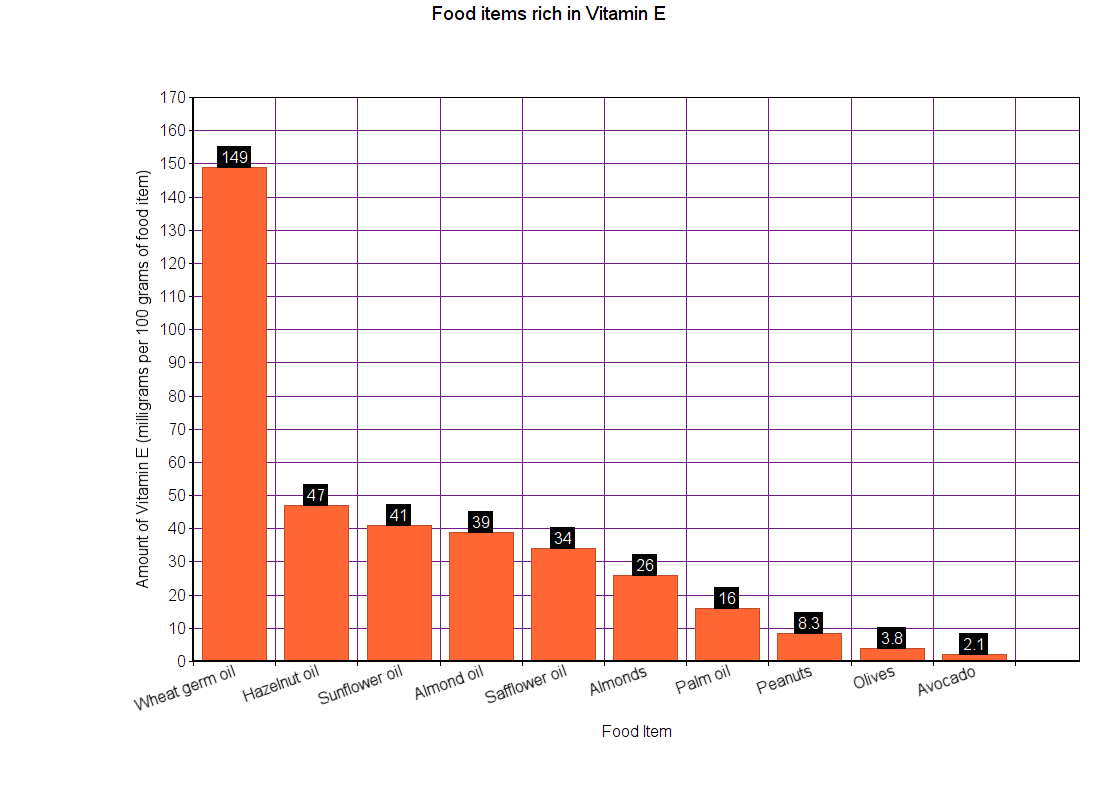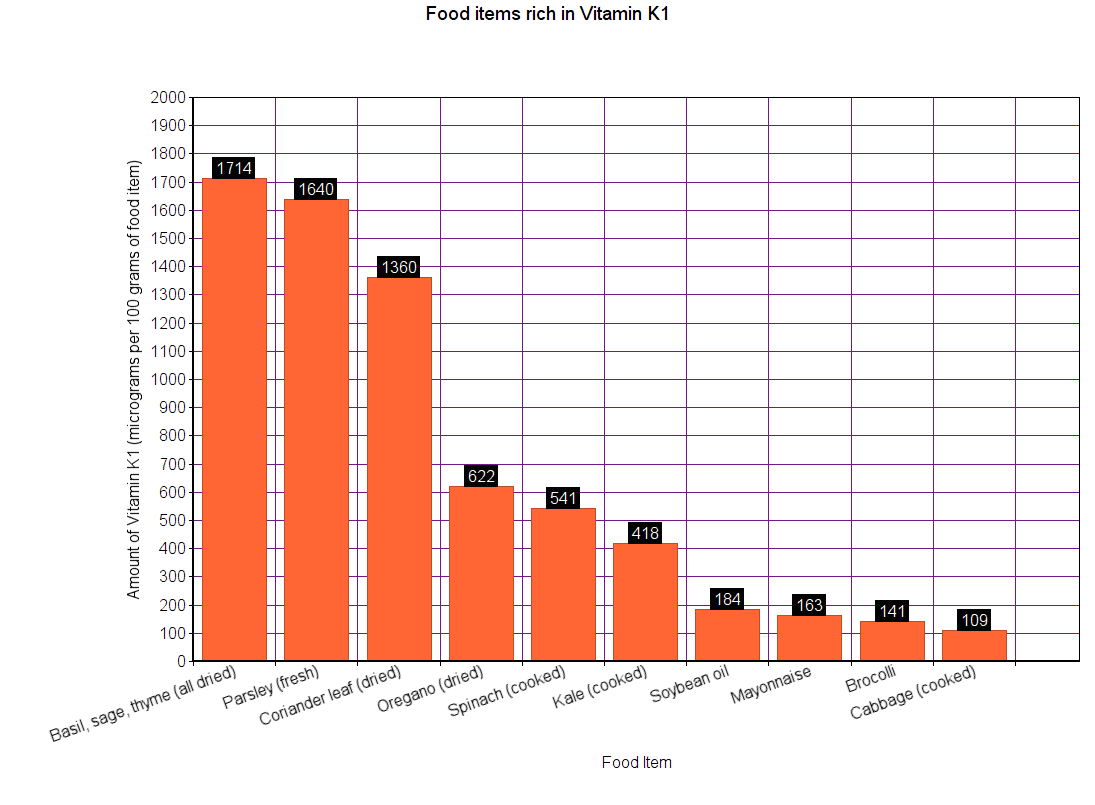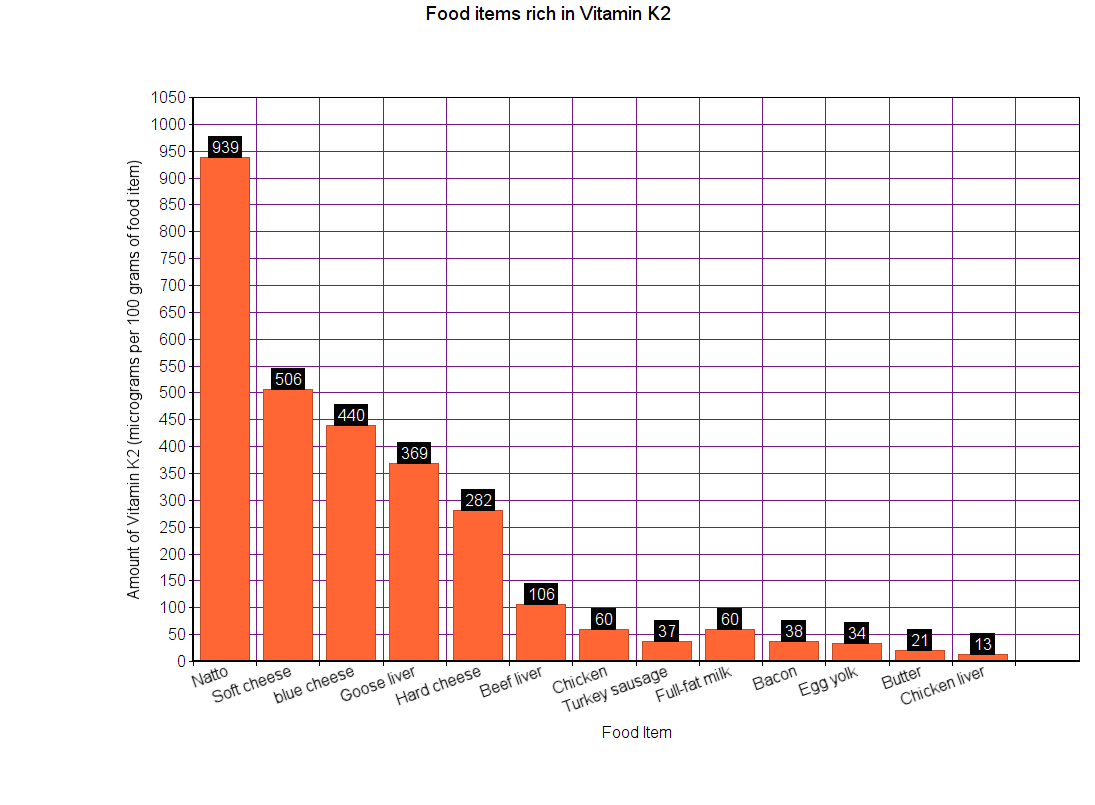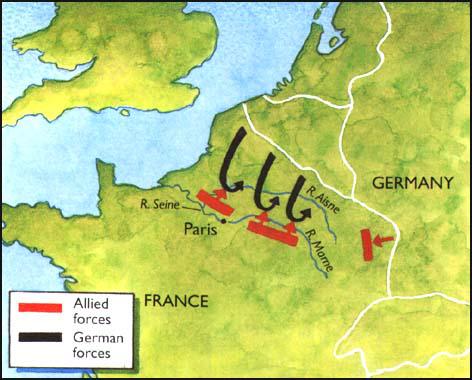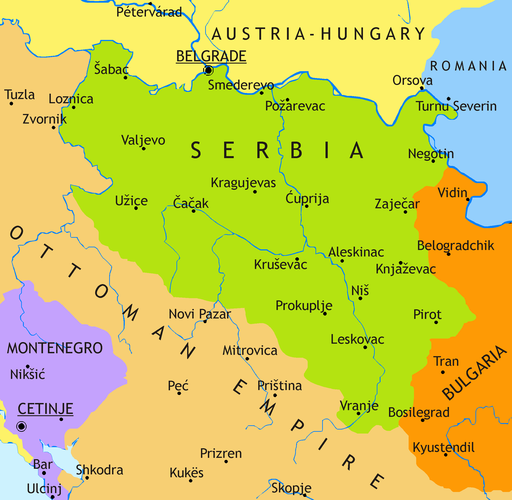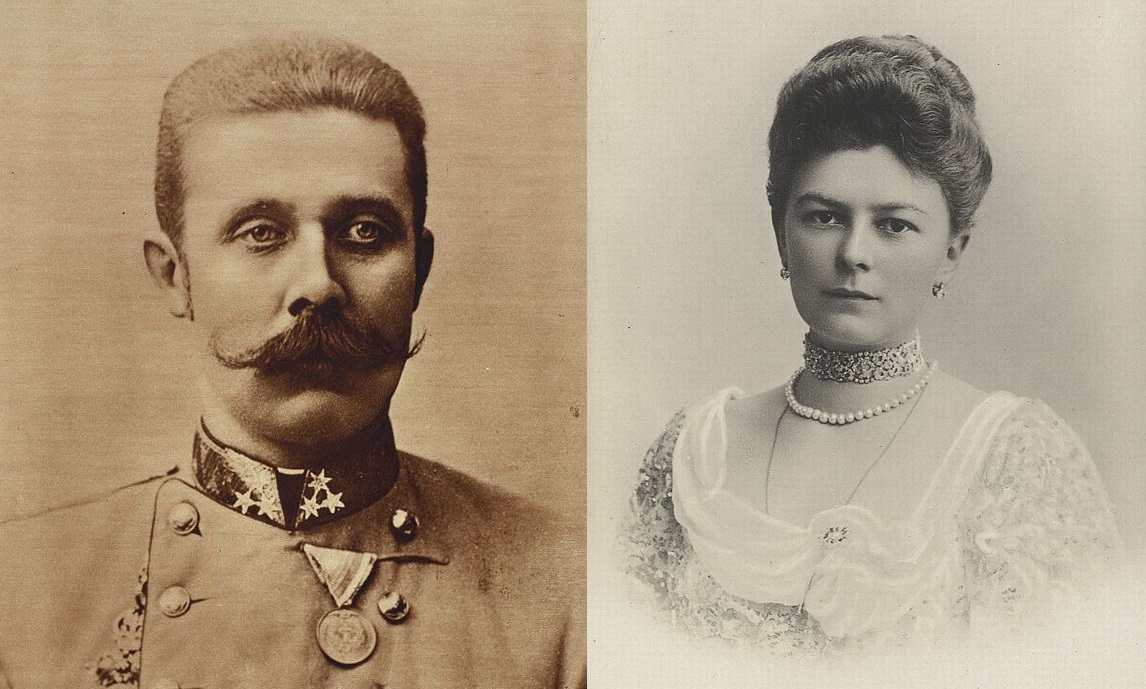[tqb_quiz id=’2843′]
Author: Maddy
-
Vitamin C – Your Body Needs It Every Day
Although most plants and animals can produce vitamin C on their own, humans are not capable of that feat. In addition to that, only 18% of the vitamin C that we eat is absorbed into the bloodstream. However, it is available in so many plant and animal products, that the deficiency is rare.
Along with vitamin E, it functions as an antioxidant in your body, protecting the cells from destruction by free radicals.
You can read about other water-soluble vitamins here: Water-soluble vitamins.
Vitamin C is needed for the synthesis of collagen. Besides strengthening several tissues in your body, collagen also helps regenerate dead skin cells. So, the higher the amount of vitamin C in the body, the faster cuts, grazes, and wounds on the skin may heal. By widening the blood vessels and keeping them healthy, it may also reduce the risk of heart diseases and reduce high blood pressure.
Disclosure: While I have taken considerable efforts to make sure whatever written here is true, it cannot be guaranteed to be 100% accurate. This article is only meant to improve your knowledge of various vitamins and help you learn their functions and importance.
I advise you to do your research by following the links in the article and consulting your doctor or dietician before making any huge changes to your diet.
Food for thought: What is collagen, and what does it do?
Collagen
Collagen is a type of protein that constitutes one-third of all the protein in the body. It is fibrous and hard. It is found in skin, muscles, bones, and connective tissues.
Collagens are macromolecules (made up of a large number of atoms) responsible for holding the body together. They are elongated structures that form a strong connection between cells. They make the skin strong and flexible and form protective coatings over internal organs (like kidneys).
Collagen can help heal wounds and replace dead skin cells with new ones. It can be synthesized by the body as well as broken down and reabsorbed by the body.
As you get older, collagen synthesis reduces. This is one of the reasons for wrinkled skin. Exposure to UV light and smoking can also reduce collagen synthesis.
Maintaining a varied and healthy diet, exercising regularly, giving up smoking, and reducing exposure to UV light can help prevent the reduction of collagen synthesis. This can, in turn, keep your blood vessels, skin, bones, joints, ligaments, and muscles healthy and strong for a long time. It also reduces the visible effects of aging, like wrinkled skin.
It improves the immunity of the body because the immune cells in your body contain vitamin C.
Vitamin C helps the body absorb iron more effectively, thereby preventing anemia.
It is also needed for the synthesis of a neurotransmitter (norepinephrine), which is a stress-response hormone.
Vitamin C may also reduce the risk of cataracts. It may also help people who have Diabetes keep their organs healthy.
Deficiency
The deficiency of this vitamin causes scurvy, a disease that killed about two million sailors between 1500 and 1800, even before its discovery in 1932. The early symptoms include:
- Fatigue
- Pain in the joints and muscles
- Nausea (vomiting sensation)
- Diarrhea
- Spotted and pale skin
- Inflamed gums
- Depression
- Partial immobility
As the disease progresses, worse symptoms might appear:
- Dry and bulging eyes
- Swelling of bones and joints in the hands and legs
- Bleeding gums that are purple
- Brown, scaly and bleeding skin that is yellow
- Loss of teeth
- Hair that breaks off easily
- Reduced healing of wounds
- Loss of nerve feeling or function
If left untreated, scurvy always results in death.
Overconsumption
Even though the overconsumption of vitamin C through food is not a problem, one must take care of the supplements. If you consume high doses (more than 1 gram/day), it can cause nausea and diarrhea. In some people, it might increase the risk of kidney stones.
Sources of Vitamin C
For infants less than a year old, RDA couldn’t be calculated. So, AI is used instead. For these age groups, no UL data is available.
Note: All the values are in milligrams.
Best practices
How to absorb vitamin C better?
Heat and light can destroy vitamin C. So, avoid cooking at high temperatures or for a long time.
It is soluble in water, i.e., from the food, it leaks into the water. So, don’t wash once you peel the outer skin. Use as little water as possible for cooking or drink the liquid used to cook.
Light destroys this vitamin. Therefore, store food items in a dark place.
To obtain the maximum amount of vitamin C, eat foods raw when they are ripe.
Who should take supplements?
Adequate amounts of vitamin C can be obtained from food. Therefore, normal healthy people normally don’t suffer from vitamin C deficiency. However, the following types of people are at risk of deficiency and might benefit from supplements.
- Smokers and passive smokers
- People whose bodies have difficulty absorbing iron, since vitamin C improves iron absorption
- People suffering from malnutrition
- Infants fed with boiled cow’s milk (cow’s milk contains less vitamin C)
- People who don’t have a limited diet that lacks in variety
- People who have diseases that affect the absorption of vitamins
Even though supplements can help several groups of people, it is advisable to consult your doctor first.
How long does it take for your body to absorb vitamin C completely?
If you eat your RDA of vitamin C, 80% of it is absorbed within 24 hours. If your intake is very less when compared to your RDY, only 50% of it is absorbed in 24 hours.
How long does vitamin C stay in the body?
It can vary from person to person. But generally, within 24 hours, most of the vitamin leaves your body.
What happens to any excess of the vitamin you consume?
Your body removes any excess amounts through the urine regularly. Only at very high doses, more than 2000mg/day, it might cause undesired effects.
Food vs. supplements
The natural and synthetic forms are identical chemically. However, synthetic forms are cheaper.
Summary:
Vitamin C is a water-soluble vitamin, which our body cannot produce on its own. So, we need to consume it every day.
Vitamin C acts as an antioxidant protecting your body from harmful chemicals. It also strengthens your immune system.
It is found in guava, broccoli, papaya, and citrus fruits.
-
Water-soluble Vitamins – Your Body Needs Them For Survival
Vitamins can be divided into fat-soluble vitamins and water-soluble vitamins. Your body doesn’t store water-soluble vitamins. It rapidly removes them through urine. Hence, you need to consume sufficient amounts of these vitamins every day.
Vitamin B and C are the only water-soluble vitamins. Vitamin B can be further divided into eight vitamins. All the vitamins that fall under the category of vitamin B are coenzymes.
Food for thought: What are coenzymes?
A lot of chemical reactions happen in our bodies. Without these reactions, our survival would be impossible.
Enzyme
An enzyme is a macromolecule (a molecule made up of more than a hundred atoms). It acts as a catalyst (a helper) in chemical reactions like digestion and metabolism. However, these enzymes are highly selective catalysts, i.e., each enzyme acts as a catalyst only for a particular chemical reaction.
By reducing the energy needed to start these chemical reactions, enzymes speed up chemical reactions, up to a million times. In the absence of enzymes, some of these chemical reactions may not even happen.
Functions of enzymes:
Food: Enzymes help in breaking down the complex molecules in our food into smaller molecules like glucose, which provide instant energy.
DNA: Whenever a cell splits, the DNA it contains should be copied to the resulting daughter cells. Enzymes play a significant role in this process.
Toxins: Enzymes help the liver perform one of its primary functions – breaking down toxins in our bodies.
Proteins: Enzymes help break down proteins into amino acids, which are vital for many processes, including repairing cells after a workout.
Fats: Enzymes also help in breaking down fats, in our guts, into fatty acids. Fatty acids are absorbed into the bloodstream and used by the body for repairing cells, producing energy, and improving immunity.
Detergents: Enzymes are also used in many industries. One famous example is the use of enzymes in detergents to break down the proteins present in blood and egg.
During these processes, enzymes themselves are not consumed. Hence, once they finish catalyzing one chemical reaction, they can go and catalyze another similar chemical reaction.
Cofactors – To function properly, enzymes need cofactors. Cofactors help coenzymes function properly. There are two types of cofactors – coenzymes (organic – ions containing carbon) and inorganic ions (ions containing non-carbon atoms like Magnesium, Calcium, etc).
Coenzymes – Coenzymes can’t function alone. However, they attach themselves to enzymes so that the reacting molecules attach easily with the enzymes to form intermediate products.
Picture credits These intermediate products then react with other reacting molecules to form the final product and the enzyme. During this reaction, the shape of the coenzyme might change.
Reacting molecule 1 + Coenzyme = Intermediate product
Intermediate product + Reacting molecule 2 = Final product + Coenzyme
Coenzymes are essential to our bodies because they help enzymes perform chemical reactions easily and quickly.
Disclosure: While I have taken considerable efforts to make sure whatever written here is true, it cannot be guaranteed to be 100% accurate. This article is only meant to improve your knowledge of various vitamins and help you learn their functions and importance.
I advise you to do your research by following the links in the article and consulting your doctor or dietician before making any huge changes to your diet.
The approach used in this blog post
To understand the importance of vitamins, first, you will read the symptoms that occur due to its deficiency.
Then, you can try to identify the vitamin from these symptoms.
Once you have done that, you can go on to find the sources of that vitamin.
Then, you will find out who needs to take supplements of that vitamin, and how to help your body absorb that vitamin better.
If you want to read about fat-soluble vitamins, you can read my blog post here: Fat-soluble vitamins.
Identify this vitamin – 1
Among all the water-soluble vitamins, this is the first B vitamin that was discovered. It helps your body to convert carbohydrates into energy. The cells throughout your body, including those in your brain, use this energy.
It is involved in the creation of neurotransmitters that stimulate muscle control and behavior. These neurotransmitters are also essential for memory and cognition. Hence, the nervous system and the brain need this vitamin to function properly.
Deficiency
The deficiency of this water-soluble vitamin can cause fatigue and weakness (due to lack of energy) and can cause nerve damage (this vitamin helps in the creation of neurotransmitters, remember?).
It can lead to diseases like Beriberi (damage to the nervous system leading to muscular paralysis or damage to the cardiovascular system leading to heart failure). In extreme cases, it can cause Wernicke-Korsakoff syndrome (damage to the brain leading to memory loss, hallucinations, etc.).
Overconsumption
Overdosing on this vitamin is extremely rare since your body excretes it through urine. Symptoms of rare cases of vitamin B1 supplement overdose can include diarrhea, allergic reactions, rapid heartbeat, etc.
Which vitamin is it?
Vitamin B1 (Thiamine)
Sources
The Recommended Dietary Allowance for vitamin B1 is given in mg/day (milligrams per day). For infants less than a year old, RDA couldn’t be calculated. So, AI is used instead. Since vitamin B1 is not poisonous even when taken in high amounts, no UL data is available.
Note: All values are in milligrams
What are RDA, AI, and UL?
You can read the definitions for these terms here: Definitions of RDA, AI, and UL.
Best practices
How to absorb vitamin B1 effectively?
1. Vitamin B1 is a water-soluble vitamin. Your body can store it only for a short time. Then, your body removes it through the urine. So, you have to take it every day.
2. On cooking, 25% of the vitamin B1 is lost. So, using as little water as possible or using a microwave oven can reduce the amount of vitamin B1 lost through cooking.
Who should take supplements?
Healthy people normally don’t have a B1 deficiency. Hence, they don’t have to take vitamin B1 supplements.
1. People with high blood sugar levels are at risk of vitamin B1 deficiency because vitamin B1 is eliminated through urine. Vitamin B1 levels could be reduced by 75%-76% in these people. It is advisable for these people to either eat a B1 rich diet or take vitamin B1 supplements.
2. People who are chronic alcohol consumers are also at risk of vitamin B1 deficiency. While inadequate B1 intake is the main reason for this, high levels of alcohol can also impair B1 absorption as well as the conversion of B1 into coenzyme. These people can also benefit from vitamin B1 supplements.
3. Do not wash grains like rice in water if the packet doesn’t advise you to do so. Up to 25% of B1 is lost by washing rice once in the water.
How long does it take for your body to absorb the vitamin completely?
When you consume less than 5milligrams of vitamin B1, it can be absorbed almost immediately.
How long does the vitamin stay in the body?
While most of the vitamin B1 you consume is excreted within a day, a very small portion of it can remain for up to 3 days.
What happens to any excess of the vitamin you consume?
Your body can hold only a maximum of 30 milligrams of B1. Anything in excess is removed through the urine.
Food vs. supplements
The synthetic form of vitamin B1 is fat-soluble. Hence, it can be stored in your body for a longer time. However, this also makes it easier to overdose due to supplements.
Identify the vitamin – 2
Like other water-soluble vitamins, this vitamin helps in breaking down carbohydrates, proteins, and fats. It helps in the creation of red blood cells and recycling antioxidants.
It plays a significant role in maintaining healthy skin and good vision. Taking an adequate amount of this vitamin every day may also help prevent cataracts. It may also help reduce the number of migraine attacks. Taking supplements of this vitamin during a headache may reduce the pain experienced during migraines.
It helps convert other vitamins (B6 & B9) into forms that can be used by the body. It also impacts the absorption of other minerals (like iron) through the bloodstream.
Deficiency
Since this vitamin is available in many common foods, it is rare for healthy people to have this deficiency. It may be caused due to a poor diet.
Also known as Ariboflavinosis, the reasons for this deficiency can be: primary (lack of this vitamin in the diet) or secondary (disability of the body to absorb the vitamin properly).
Due to its deficiency, several symptoms could show up within a few days. The tongue becoming red; Throat becoming sore; Corners of the mouth becoming swollen; Eyes becoming sensitive to light; Skin becoming dry and itchy on the nose and lips; Hair starting to fall; Rashes developing on the genitals, are some of those symptoms.
Since it impacts the absorption of iron in the body, its deficiency may also cause anemia, leading to a shortage of red blood cells.
Overconsumption
Excess of this vitamin is removed from the body through the urine. So, overconsumption of this vitamin doesn’t have any side-effects.
Only in extreme overdoses, it might cause diarrhea or yellowish-orange color of urine.
Which vitamin is it?
Vitamin B2 (Riboflavin)
Sources
Vitamin B2 is present in various food items. The RDA for children below one year is not known. Hence, AI is used.
Note: All values are in milligrams.
Best practices
How to absorb vitamin B2 better?
Water-soluble vitamins lose their nutrient value due to cooking.
However, vitamin B2 was believed to be the fraction of vitamin B that was most resistant to heat. But prolonged heating can still destroy its nutritional value. For example, milk loses up to 27% of its vitamin B2, when boiled for 15 minutes.
More than heat, light is the bigger enemy to vitamin B2. That is why milk comes mostly in opaque containers (paper or plastic).
To retain the vitamin B2 in the food you eat, store food items in a dark place. Eat fresh whenever possible. If you should cook, use as little water as possible, and drink the excess water after cooking.
Who should take supplements?
Normal healthy people don’t need to take supplements for water-soluble vitamins as deficiency is very rare in healthy people. This is true for vitamin B2 as well.
A poor diet and diseases that affect vitamin B2 absorption can cause vitamin B2 deficiency. It is more common in teenagers, older people, chronic alcoholics, and people with HIV.
Hence, these people may benefit from taking vitamin B2 supplements. Consuming even high doses of vitamin B2 is not toxic for healthy people. Hence, different doses of B2 are given to people depending on the intended benefit.
How much of the vitamin does your body absorb from your diet?
Your body can absorb nearly 100% of the vitamin B2 you eat.
How long does the vitamin stay in the body?
Like other B vitamins, it may remain in your body for 24 hours. Drinking lots of water can remove these vitamins faster due to the increased frequency of urination.
What happens to any excess of the vitamin you consume?
Excess vitamin B3 is not stored in your body. Instead, it is removed through urine rapidly.
Food vs. supplements
Natural forms of this vitamin are better absorbed and are safer to consume since toxicity due to overconsumption is rare. On the other hand, the safety of the synthetic forms has not been proven yet.
Identify the vitamin – 3
As a coenzyme, this vitamin is essential for digestion, energy production, and maintaining healthy skin and nerves.
This vitamin plays a vital role in cellular metabolism. It helps cells break down proteins, fats, and carbohydrates, as well as create enzymes and nucleic acids (remember DNA? ).
This vitamin helps in transporting oxygen to the cells and also helps cells communicate with each other. It acts as an antioxidant, protecting the cells in your body from oxidation by free radicals.
Its role in converting glucose into energy is also well known.
It helps in reducing the levels of bad cholesterol while increasing the levels of good cholesterol. So, it has been used as a major medication against cholesterol for the past 50 years. However, due to a study conducted in 2014, the efficiency of this vitamin against cholesterol has become highly disputed. Hence, it is not recommended as a medication against cholesterol anymore.
Deficiency
The deficiency of this vitamin is rare among healthy people but can occur in alcoholics.
Since it plays a role in digestion and energy production, mild deficiency can cause fatigue, indigestion, and vomiting. It can also cause headaches, mood swings, and depression.
Severe lack of this vitamin can cause Pellagra. Symptoms include flakey skin, digestion problems, diarrhea, loss of sleep, memory loss, and even mental impairment.
Since the body can produce this vitamin from an amino acid, a high-protein diet can prevent severe deficiency.
Overconsumption
Overdosing on this vitamin due to diet alone is not possible.
However, taking supplements can be harmful when taken in large quantities. Taking more than 1 gram/day can cause stomach upset, nausea (feeling like vomiting), and red, itchy skin to appear in the neck, chest, arms, and face. Taking 3-9 grams/day over an extended period can cause liver damage.
Which vitamin is it?
Vitamin B3 (Niacin)
Sources
For children less than a year old, RDA amounts are not known. So, AI is used instead. The UL for these children are not known either.
Note: All values are in milligrams.
Best practices
How to absorb vitamin B3 better?
Like other B-vitamins, your body can absorb B3 better when you eat it with food. Protein-rich foods also provide a little bit of B3, provided B2, B6, and Magnesium are not lacking. So, eating protein-rich foods can help prevent severe cases of deficiency.
Who should take supplements?
Ordinary healthy people don’t need supplements since most of the foods, which people consume daily, are rich in vitamin B3. People belonging to the following categories may benefit from taking vitamin B3 supplements.
- Alcoholics
- Malnourished kids
- People eating low-calorie diets
- People eating diets containing refined carbohydrates
- Mothers who nurse more than one baby
- People suffering from inflammatory bowel disease
- People having vitamin B2, B6, iron or Magnesium deficiency
However, since vitamin B3 overdose can be deadly, it is advisable to consult a doctor before buying supplements.
How long does it take for your body to absorb the vitamin completely?
Like other B vitamins, vitamin B3 can be absorbed quickly(within 24 hours).
How long does the vitamin stay in the body?
Most of the vitamin B3 you consume is excreted within 24 hours.
What happens to any excess of the vitamin you consume?
Any excess vitamin B3 you consume is removed through the urine.
Food vs. supplements
Synthetic forms of vitamin B3 are found to have better absorption rates than B3 in natural sources.
Identify the vitamin – 4
This vitamin is found in almost all food items. Indeed, it got its name from the Greek word ‘Pantothen,’ which means ‘from everywhere.’ On the contrary, it is also one of the lesser-known vitamins because its deficiency is rare.
It is vital for many chemical reactions that happen in your body. Like other B-vitamins, it helps in creating energy from carbohydrates, proteins, and fats, and in maintaining a healthy digestive system. It also helps in producing red blood cells, sex- and stress-related hormones, neurotransmitters, and in processing other vitamins (B2).
Its most important use is in synthesizing Coenzyme A. Coenzyme A helps the body in creating fatty acids and cholesterol from food. The liver also needs Coenzyme A for breaking down toxins and drugs.
Supplements of this vitamin are taken to reduce cholesterol.
Deficiency
The deficiency of this vitamin is extremely rare since it is found in almost all the food items. It can occur as a result of severe malnutrition and can affect many organs. Symptoms include vomiting, stomach pain, numbness, cramps, skin irritation, sleeping disorders, and depression.
Overconsumption
This vitamin, when taken through food, is completely safe. For this reason, it doesn’t have an upper limit. It causes diarrhea when taken in high amounts (10-20 g).
However, taking it as a supplement is a completely different story.
Which vitamin is it?
Vitamin B5 (Pantothenic acid )
Sources
The graphs below show the RDA data for B5, as well as the amount of vitamin B5 contained in different food items.
Note: All values are in milligrams
Data source Data source
Best practices
How to absorb vitamin B5 better?
Since other nutrients support the absorption of vitamin B5, eat it along with food. If you take supplements, take multivitamin supplements, instead of B5 supplements. Since heat can destroy vitamin B5, try to eat as many raw sources of B5 as possible.
Who should take supplements?
People who consume alcohol excessively or have Diabetes may need higher amounts of vitamin B5. Hence, taking supplements can benefit them greatly.
Care should be taken while taking vitamin B5 supplements since it can interfere with medications. For example, people taking blood-thinning medicines should not take B5 supplements, as it can increase the risk of bleeding. So, consult your doctor before taking vitamin B5 supplements.
How long does it take for your body to absorb the vitamin completely?
Your body can absorb almost 100% of the vitamin B5 within 24 hours.
How long does the vitamin stay in the body?
Your body excretes almost all of the vitamin B5 within the first 24 hours of consumption.
What happens to any excess of the vitamin you consume?
Vitamin B5 is one of the safest water-soluble vitamins. Your body removes any excess amount you consume by urination.
Food vs. supplements
Synthetic forms of vitamin B5 are easily available and are cheaper than natural food sources. Other than that, there aren’t any other advantages to taking supplements.
Read the rest of the blog post here: Water-soluble vitamins Part 2
-
Water-soluble Vitamins – Part II
This blog post is the second part of the ‘Water-soluble vitamins’ blog post series.
Read the first part of the blog post here: Water-soluble vitamins
Identify the vitamin – 5
Like other B-vitamins, this vitamin also helps break down the food molecules into energy.
This vitamin helps in the formation of red and white blood cells in your body. It is required for the production of hemoglobin (in the blood), which transports oxygen throughout the body. It also aids your body in the production of insulin. Insulin, in turn, regulates the glucose levels in your body by helping cells absorb glucose in food to produce energy.
The nervous system is responsible for conveying the information from the brain to other parts of the body and vice-versa. It is composed of neurons. These neurons communicate with each other by releasing neurotransmitters. This vitamin is involved in the synthesis of specific neurotransmitters that regulate your mood and sleep cycles.
Along with B9 and B12, it helps reduce the levels of a dangerous amino acid in your body. This amino acid (Homocysteine), produced by eating meat, can cause depression, increase the risk of Alzheimer’s disease, and heart disease.
It might also reduce the feeling of nausea and morning sickness during pregnancy.
Deficiency
The deficiency of this vitamin can occur in people with drinking problems, kidney failure, and liver diseases. This deficiency can also occur due to malnutrition and some medications which suppress this vitamin. But, it is rare among healthy people.
Since this vitamin is so important to your body, its deficiency can cause a multitude of problems. If left untreated, it can be fatal.
Symptoms include a weak immune system, anemia, seizures, depression, confusion, nervousness, skin rashes, cracked lips, muscle weakness, and numbness.
Overconsumption
Even though this vitamin is vital to several processes in your body, overconsumption can be harmful to the body.
Taking more than 100mg/day of this vitamin can cause nausea, dizziness, and sensitivity to sunlight. Higher doses of more than 200mg/day could lead to imbalance and loss of feeling in the legs.
Which vitamin is it?
Vitamin B6 (Pyridoxine)
Sources
The graphs below show the RDA data for B6, as well as the amount of vitamin B6 contained in different food items. For infants less than a year old, RDA is not known. Hence AI is used instead. For these age groups, UL is also not known.
Note: All values are in milligrams
Data source Data source
Best practices
How to absorb vitamin B6 better?
Eat a variety of food items – vegetables, fruits, milk products, whole grains, oils, lean meats, fish, eggs, nuts, and seeds. They are all rich in vitamin B6.
Eat a lot of raw foods (vegetables, fruits, nuts, and seeds) because vitamin B6 is destroyed by heat. Sunlight also destroys vitamin B6. So, store these items in a dark place.
Who should take supplements?
It is advisable to try to take all your vitamins from your diet. However, unlike healthy people, some people might have trouble absorbing vitamin B6. People belonging to the following categories might benefit from vitamin B6 supplements:
- Alcoholics
- People with poor intestinal absorption
- People who take medications or drugs like corticosteroids, estrogens, and anticonvulsants
- Children and Older people who are B6 deficient mildly
- People suffering from kidney disease, hyperthyroidism, inflammatory bowel disease, and autoimmune disorders
However, it is advisable to consult a doctor before taking vitamin B6 supplements, since it can interfere with some medications.
How long does it take for your body to absorb the vitamin completely?
Your body can absorb almost 100% of vitamin B6 you eat within 24 hours.
How long does the vitamin stay in the body?
Most of the vitamin B6 you eat is excreted through urine within 24 hours.
What happens to any excess of the vitamin you consume?
Normally, any excess vitamin B6 you eat is removed through the urine. However, when you overeat vitamin B6 regularly, it might be stored in organs like the liver and kidneys. This can become dangerous in the long run.
Food vs. supplements
Natural forms of vitamin B6 might be stored better in your body. However, it is difficult to obtain all the required RDA of vitamin B6 from the food alone.
Identify the vitamin – 6
This vitamin was known as vitamin H (Haut or Haar – skin or hair in German) because people took it as a supplement to keep the skin, hair, and nails healthy. However, its benefit in these areas is not proven.
Like other B vitamins, it helps break down proteins, fats, and carbohydrates.
It helps in the transfer of Carbon-dioxide from the cells to the lungs.
Since it aids the growth of the embryo, it becomes a vital vitamin during pregnancy.
Deficiency
Besides being present in various food items, bacteria in the intestines can also make small amounts of this vitamin. Hence, the deficiency of this vitamin is very rare among healthy individuals.
However, smokers can suffer from a deficiency of this vitamin. Raw egg whites contain a substance that can reduce the body’s ability to absorb this vitamin. More than 60% of it is lost upon cooking. Hence, if you drink a lot of raw egg whites, you are at risk of this deficiency.
The deficiency of this vitamin can cause
- Hair loss, dry eyes, sore tongue, and red rash and scaly skin near the eyes, nose, mouth and genitals
- Nausea, vomiting, and loss of appetite
- Lack of sleep, depression, and hallucinations
- Numbness and tingling sensation in arms and legs.
Overconsumption
This vitamin is a water-soluble vitamin. So, problems due to overconsumption are very rare, since the body removes any excess amount through urine, without storing it.
However, the symptoms of toxicity due to overconsumption include skin allergies, excessive thirst, urination, insomnia, and lower levels of vitamins B6 and C. In extreme cases, it can cause Anaphylaxis, which is a life-threatening allergy.
Which vitamin is it?
Vitamin B7 (Biotin)
Sources
Since RDA amounts for vitamin B7 is not known accurately, AI is used instead.
Note: All values are in micrograms
Data source Data source
Best practices
Since vitamin B7 is not affected by heat. So, cooking does not destroy vitamin B7.
However, it is affected by water, since it is a water-soluble protein. So, when upon soaking or boiling in water, the vitamins seep into the water from the food items. So, use as less water as possible while cooking and avoid soaking in water.
Who should take supplements?
While vitamin B7 deficiency is pretty rare among healthy people, it can still occur. In general, people who belong to the following categories might suffer from vitamin B7 deficiency.
- People who are fed intravenously for extended periods
- People who take antibiotics or anti-seizure medicines for long periods
- Pregnant women (may develop marginal deficiency)
- People who consume raw egg whites
- Excessive alcohol drinkers
- Smokers
- People whose intestines have trouble absorbing vitamins
People who fall under these categories might benefit from vitamin B7 supplements. But, it is advisable to consult your doctor first before taking supplements.
How long does it take for your body to absorb the vitamin completely?
Almost 90% of the vitamin B7 you eat is absorbed within 24 hours.
How long does the vitamin stay in the body?
Most of the vitamin B7 does not stay in your body for more than 24 hours.
What happens to any excess of the vitamin you consume?
Urination rapidly removes excess vitamin B7.
Food vs. supplement
The natural form of vitamin B7 might be absorbed better and could be more effective.
Identify the vitamin – 7
It got its name from the Latin word ‘folium,’ meaning leaf because it was first isolated from spinach leaves.
This vitamin is essential for the formation of new cells, especially during rapid-growth periods like infancy, childhood, adolescence, and childbirth.
It is needed for the production of RNA and DNA, making red and white blood cells in the bone marrow, and for breaking down proteins and carbohydrates in the food.
Along with B6 and B12, it helps reduce the amount of homocysteine in your body. As a result, the chances of heart diseases and stroke are reduced.
It might also help improve the body’s response to antidepressants.
Deficiency
Since this vitamin is vital for cell growth, its deficiency can cause impaired growth.
Deficiency during pregnancy can cause defects in the infant’s brain or spine and might increase the chances of miscarriage. So, pregnant women need to take at least 600 micrograms of this vitamin every day.
Due to its importance in creating red blood cells, its deficiency can cause anemia.
Symptoms include fatigue, shortness of breath, irritability, headache, and inability to concentrate.
Overconsumption
Overconsumption of this vitamin may increase the risk of seizures.
It can make it difficult or impossible to detect a vitamin B12 deficiency. This can be dangerous since the lack of B12 can damage your nerves permanently and even cause paralysis.
Which vitamin is it?
Vitamin B9 (Folic Acid or Folate)
Sources
For infants less than a year old, RDA couldn’t be calculated. So, AI is used instead. For these age groups, no UL data is available.
Note: All the values are in micrograms.
Data source Data source
Best practices
How to absorb vitamin B9 better?
Vitamin B9 can create various health problems when consumed in excess. Hence, it is always safe to eat it as a part of a varied, nutritious diet.
Vitamin B9 is easily destroyed by heat. So eating overcooked vegetables might actually cause a deficiency of vitamin B9. So, try to get most of your vitamin B9 from raw fruits and vegetables.
Who should take supplements?
The deficiency of this vitamin is rare among healthy individuals and rare on its own. It normally occurs along with other vitamin deficiencies and may be caused by a poor diet. So, unlike healthy individuals, the below groups of people might benefit from vitamin B9 supplements.
If B9 reaches high levels, it will be difficult to detect a B12 deficiency. So, take a vitamin B12 test before starting a B9 supplement to make sure that you don’t have a B12 deficiency.
- People who drink excessive alcohol
- People with kidney disease
- Women who are pregnant, planning to get pregnant or lactating
- People who suffer from folic acid (B9) deficiency anemia
- People who take medications (for seizures, cancers, and rheumatoid arthritis) that affect the body’s ability to absorb vitamin B9.
Even though taking vitamin B9 supplements can be beneficial in certain cases, it is advisable to consult your doctor first.
How long does it take for your body to absorb the vitamin completely?
Vitamin B9 has an absorption rate of almost 100% when eaten along with food. Most of the vitamin B9 you eat is absorbed within 24 hours. The absorption rate might reduce when eaten without food.
How long does the vitamin stay in the body?
Almost all of the vitamin B9 is excreted within 24 hours.
What happens to any excess of the vitamin you consume?
Excess B9 you consume is removed through the urine. However, overdosage may reduce its absorption rate.
Food vs. supplement
Natural vitamin B9 has an absorption rate of 100%, whereas synthetic B9 has an absorption rate of 85%. On the other hand, synthetic B9 is cheaper.
Identify the vitamin – 8
This is the only vitamin that contains a metal – Cobalt.
This vitamin is crucial for the normal functioning of the nervous system and the brain. It helps in forming a protective sheath around the nerves so that impulses can travel faster. It is also important for the creation of neurotransmitters (serotonin and dopamine). These neurotransmitters regulate your sleep, mood, movement, eating, and help us in experiencing pleasure.
Like other B-vitamins, this vitamin also plays a major role in converting fats and proteins into energy.
It is essential for cell division, building genetic material (DNA), and the creation of red blood cells.
Along with B6 and B9, it helps reduce the amount of homocysteine in your body. As a result, the chances of heart diseases and stroke are reduced.
Deficiency
The human liver can store excess amounts of this vitamin for up to four years. So, even if you are deficient, it may take several years for any symptoms to show up.
Vegans are at a greater risk of this deficiency because this vitamin is only found in animal products.
The deficiency of this vitamin can cause irreversible damage to the brain and the nervous system. It can also cause anemia.
Some of the symptoms include:
- Fatigue and shortness of breath
- Soreness in mouth and tongue
- Loss of appetite, constipation and weight loss
- Tingling in the arms and legs, numbness and difficulty maintaining balance
- Anxiety, confusion, hallucinations, depression, and memory loss
Overconsumption
Since the body can absorb only a small portion of this vitamin, overconsumption of it is not considered dangerous. Indeed, the last occurrence of its toxicity was in 2001.
Which vitamin is it?
Vitamin B12 (Cobalamin)
Sources
For infants less than a year old, RDA couldn’t be calculated. So, AI is used instead. For these age groups, no UL data is available.
Note: All the values are in micrograms.
Data source Data source
Best practices
How to absorb vitamin B12 better?
Grilling or frying the meat can destroy 20% of vitamin B12 initially present. In addition to that, boiling can also destroy vitamin B12.
So, if you cook, use as little water and oil as possible. If you boil the meat, drink the water you used to boil the meat as soup, instead of throwing it.
Who should take supplements
The following groups of people are at an increased risk of B12 deficiency and can, therefore, benefit from its supplements.
- People who suffer from an eating disorder
- People who have had weight-loss surgeries
- Older people aged 60 or more
- People who drink too much alcohol
- People who are HIV-positive
- Vegans
- People who have difficulty absorbing vitamins (Example:- Irritable bowel syndrome)
How long does the vitamin stay in the body?
Traces of this vitamin are stored in the body for up to four years.
What happens to any excess of the vitamin you consume?
Any excess amount of vitamin B12 is removed through the urine. However, high doses can cause problems.
Food vs. supplements
Natural vitamin B12 is bound to protein when we eat it. Your stomach then breaks it down to obtain the free form of this vitamin.
Synthetic B12 might be absorbed better (around 56%, when taken as a 1microgram oral dose) because it is already available in free form and therefore doesn’t need to be broken down. Moreover, natural B12 is only available in animal products. If you are a vegan, you cannot get vitamin B12 from food.
Vitamin C
Vitamin C is another water-soluble vitamin that performs several vital functions in your body. You can read about it in detail here: Vitamin C.
-
Fat-soluble Vitamins – You Need Them To Live Healthily
Do you know what the four fat-soluble vitamins are and why your body needs these vitamins? Do you know how to identify if you lack any of these vitamins? If you don’t know, do not fret. This blog post will tell you everything you need to know.
There is an ancient Indian proverb that says food is medicine.
Our ancestors lived a life proving that it is true. By eating a balanced diet rich in proteins, healthy fats, carbohydrates, essential vitamins, and minerals, they lived healthily.
Many of us, however, have forgotten the importance and the source of vitamins vital to our survival.
Vitamins are named in the order of their discovery, starting from ‘A’ going all the way to ‘E’. The only exception is vitamin ‘K’, which was assigned ‘K’ from ‘Koagulation’ by its Danish researcher.
In a blog post like this, the usual approach is to list the vitamins, their sources, and their importance. However, in this blog post, I have used a different approach.
To understand the importance of vitamins, first, you will read the symptoms that occur due to its deficiency.
Then, you can try to identify the vitamin from these symptoms.
Once you have done that, you can go on to find the sources of that vitamin.
Then, you will find out who needs to take supplements of that vitamin, and how to help your body absorb that vitamin better.
Disclosure: While I have taken considerable efforts to make sure whatever written here is true, it cannot be guaranteed to be 100% accurate. This article is only meant to improve your knowledge of various vitamins and help you learn their functions and importance.
I advise you to do your research by following the links in the article and consulting your doctor or dietician before making any huge changes to your diet.
Types of vitamins
Vitamins are classified into two types: Fat-soluble and Water-soluble.
Water-soluble vitamins
Water-soluble vitamins, like the name indicates, are soluble in water. The tissues in your body can easily absorb these vitamins. However, Your body uses these vitamins immediately and does not store them for later use. So, you have to regularly consume these vitamins in small doses.
Overconsumption of water-soluble vitamins is not harmful to the body since your body excretes any excess vitamins through urine.
If you want to read about water-soluble vitamins, read our blog post here: Water-soluble vitamins.
Fat-soluble vitamins
Fat-soluble vitamins, on the other hand, are like oil and are not soluble in water. The bloodstream in your body distributes them throughout the body and your liver and fatty tissues store them for later use. The body absorbs these vitamins better when eaten along with fats.
Overconsumption of fat-soluble vitamins can lead to the creation of poisonous chemicals in the body.
Definitions:
RDA
The Recommended Dietary Allowance (RDA) refers to the average daily amount of a vitamin that is sufficient to meet the nutrient requirements of 97% – 98% of healthy people of a particular age, sex, physiological condition, or life stage. It is used for planning your diet.
AI:
Whenever RDA cannot be determined, an Adequate Intake (AI) is used. It is also a recommended average daily intake level. However, unlike RDA, it is not accurate. AI is based on approximations of nutrient intake by groups of healthy people that are observed, estimated, or experimentally determined and are assumed to be adequate.
UL:
The Upper Intake Level (UL) is the maximum amount of nutrients a person in the general population can consume, without exposing himself/herself to any risk of adverse health effects.
Identify this fat-soluble vitamin – 1
It is a fat-soluble vitamin needed for good vision and maintaining the health of your bones.
It helps in creating and distributing T-cells, a type of white blood cells, throughout the body. Therefore, it improves the immunity of the body.
It is important for cell growth. Hence, it plays an important role in keeping the skin cells healthy.
It is also involved in the development of sperms and eggs. Hence, it is needed for reproduction.
Deficiency
Since this fat-soluble vitamin is stored in the liver for years, it might take two years for the symptoms of this deficiency to show up.
Eyes becoming dry is one of the first symptoms of deficiency of this vitamin.
Eye-related problems are some of the most common effects of deficiency of this vitamin.
Lack of this vitamin can also lead to dry skin, poor healing, reduced growth, and infertility. It is more common in African nations where malnutrition is prevalent.
Overconsumption
Overconsumption of this vitamin can lead to mouth ulcers, rough skin, vision changes, and birth defects in pregnant women. Hence, it is better to consult your doctor before taking vitamin supplements.
Which vitamin is it?
Vitamin A, also known as Retinol.
How much should you consume every day
The intake of vitamin A varies depending on the age of the person. The graph below gives you an idea of the Recommended Dietary Allowance and the Upper intake Limit per day for infants, children, women, and men of all ages.
Note: All values are in micrograms.
Sources
Vitamin A is only found in animal products, such as cheese, butter, cod liver oil, etc.
Some vegetables and fruits contain Carotenoids (alpha- and beta-Carotene). Your body can convert these Carotenoids into vitamin A. So, Carotenoids are also called as Provitamin A because they are one stage before vitamin A. These carotenoids are excellent antioxidants.
However, not everyone’s body is equally effective in converting Carotenoids into vitamin A. Roughly, 45% of the people contain a gene that decreases the conversion rate. So, if you are a vegan, or depend primarily on vegetable supplies for vitamin A, the graphs below may not hold true for you.
Since fat-soluble vitamins are easily absorbed when eaten along with fats, add a little oil to your salads.
Best practices
How to absorb Vitamin A effectively?
1. Vitamin A is a fat-soluble vitamin. To absorb it effectively, take some fats along with it. If you eat a diet less in fat every day, your body’s ability to absorb vitamin A will be reduced considerably.
2. Animal sources contain vitamin A in their direct form. Plant sources only contain provitamin A, which has to be converted into vitamin A by your body. So, try to consume more animal sources of vitamin A. If you are a vegan, add olive oil (fat) to your vegetables.
3. Don’t take vitamin A supplements on an empty stomach. It may lead to indigestion and heartburn. In addition to that, vitamin A may not be absorbed by your body.
4. Eating Avocado increases the absorption of vitamin A since it contains good fats.
5. Zinc is also essential for the body to absorb vitamin A effectively. Add food items like cashews, kidney beans, chickpeas, almonds, chicken, and pork, which are rich in zinc, to your diet.
6. Drink less alcohol and avoid taking weight loss medicines, to absorb vitamin A better. Ask your doctor if your existing medications affect your body’s ability to absorb vitamin A effectively.
7. Cooking can break down the thick cell walls of many plant items and release the nutrients stored in them, thereby helping your body absorb vitamin A better.
Who should take supplements?
Premature infants, breast-feeding moms, and pregnant women in developing countries are at risk of vitamin A deficiency. Hence, they might benefit from vitamin A supplements.
However, pregnant women are normally advised not to take any vitamin A supplements because too much vitamin A can cause birth defects in the baby.
So, it is advisable to consult your doctor before taking any supplements.
How much of the vitamin does your body absorb from your diet?
Your body can absorb 75% to 100% of the vitamin A you consume through food. However, it can take a long time to be absorbed.
How long does the vitamin stay in the body?
Vitamin A can stay in your body for a very long time – up to several years.
What happens to any excess of the vitamin you consume?
Any excess of the vitamin A you consume will be stored in your liver for years.
Food vs. supplements
Try to consume vitamin A through diet because vitamin A consumed through natural sources of food has a better absorption rate than the synthetic form of the vitamin consumed through supplements.
Identify this fat-soluble vitamin – 2
Calcium and Phosphorous play a vital role in the formation and maintenance of bones and teeth. The primary function of this fat-soluble vitamin is to improve the absorption of these minerals. It also strengthens the immune system.
Deficiency
As a result, the lack of this fat-soluble vitamin may cause bowed legs (Rickets) in children and loss of bone mass (Osteoporosis) and/or weak bones and weak muscles (Osteomalacia) in adults.
It can also lead to an increased risk of autoimmune diseases, cancers, infectious diseases, slow wound-healing, and hypertension.
This is one of those fat-soluble vitamins that people in countries that have snowy winters lack.
Overconsumption
Overconsumption of supplements of this vitamin can lead to increased levels of Calcium (Hypercalcemia) in the body. It can be identified by symptoms like head-ache, weight-loss, heart and kidney damage, and loss of appetite.
Which vitamin is it? – Vitamin D
Sources
The primary source of vitamin D is sunlight. Twice a week, taking a short walk for 15 minutes, with your arms, hands, and legs exposed, without any sunscreen, is enough to get sufficient vitamin D.
The recommended daily intake of vitamin D (either as food-items or supplements) is given in the graph below.
Note: All values are in micrograms
Note: For infants less than a year old, RDA is not known accurately. Hence AI is shown instead.
Vitamin D can also be found in some animal and plant products.
Best practices
How to absorb vitamin D better?
1 Vitamin D is a fat-soluble protein. So, eat it along with foods rich in fat like avocados, eggs, seeds, and nuts.
2. Don’t take vitamin D supplements on an empty stomach.
3. Take vitamin D supplements along with a meal.
4. Research doesn’t clearly indicate if vitamin D is effectively absorbed by taking it in the morning, afternoon, or night.
Who should take vitamin D supplements?
1. People who stay indoors or apply sunscreen or cover their entire bodies whenever they go out need vitamin D supplements.
2. Human milk contains very little Vitamin D. Therefore, breast-fed infants who are not exposed to sunlight should be given vitamin D supplements.
3. In comparison to light skin, dark skin synthesizes less vitamin D when exposed to sunlight. So, people with dark skin, who spend less time in sunlight need to take vitamin D supplements.
4. The bodies of older people cannot synthesize vitamin D upon exposure to sunlight as effectively as younger people. So, older people who prefer to stay indoors are at a greater risk of vitamin D deficiency. Therefore, they should take vitamin D supplements.
5. The ability of people who are obese or have inflammatory bowel syndrome, to absorb vitamin D is highly reduced. Hence, they should take vitamin D supplements.
How long does the vitamin stay in the body?
Vitamin D can stay in your body for a maximum of two months.
What happens to any excess of the vitamin you consume?
The liver and the adipose tissues, located under the skin and around the internal organs, store excess vitamin D.
Food vs. supplements
If you live in countries where sunlight is a scarce resource, particularly in winter, you may have vitamin D deficiency. Vitamin D is difficult to get from food alone. So, eating food items rich in vitamin D, fortified foods, and/or multivitamin tablets can provide your body enough vitamin D. But make sure you don’t overdose on vitamin D.
Identify this fat-soluble vitamin – 3
This fat-soluble vitamin acts as an antioxidant and protects the red blood cells, vitamin A and C, and fatty acids in your body from destruction by free radicals.
Food for thought: What does an antioxidant do?
A free radical is an atom or molecule whose electron has been removed. As a result, a free radical is unstable and in constant search of an electron to become stable.
It can steal an electron from your DNA, cell membranes, and proteins, thereby damaging them. This process, called oxidation, can disrupt the normal functioning of the cells in your body, eventually killing them.
Free radicals are created in your body due to various substances, including fried foods, pesticides, air pollutants, smoking, and drinking.
Antioxidants donate an electron to these free radicals before it can interact with body cells. Thus, antioxidants protect the cells in your body from getting destroyed by free radicals.
Deficiency
The deficiency of this vitamin is very rare in healthy people. It can occur in people who can’t absorb fats (due to liver diseases) and also in premature infants.
Symptoms include a weak immune system, weak muscles, numbness, and difficulty in seeing and walking.
Overconsumption
Overconsumption of this vitamin can only happen due to supplements, not because of food items.
It can prevent blood coagulation and lead to excessive bleeding. In extreme cases, the process of antioxidation could get reversed.
Which vitamin is it? – Vitamin E
Sources
Vitamin E is primarily found in oils, nuts, and seeds.
The graph below shows the recommended intake of vitamin E for all age groups.
Note: All values are in milligrams.
Note: For infants less than a year old, UL is not known accurately, and instead of RDA, AI is shown in the graph.
The following are the sources of vitamin E.
Best practices
How to absorb vitamin E effectively?
As vitamin E deficiency is rare in healthy people, just by adding a few fats, you can absorb vitamin E easily. Adding a few almonds or sunflower seeds to your diet can improve the vitamin E intake considerably.
Who should take supplements?
There are no proven advantages in taking vitamin E supplements. The RDA of vitamin E required to maintain a healthy body can be obtained solely from natural products.
How much of the vitamin does your body absorb from your diet?
The absorption rate and the time it takes to absorb vitamin E can vary from person to person.
How long does the vitamin stay in the body?
Vitamin E can be stored in your body for several days to several months.
What happens to any excess of the vitamin you consume?
Any excess vitamin E is stored in the liver, muscles, and adipose tissues of your body. Adipose tissues are tissues located under your skin and around the internal organs of your body.
Food vs. supplements
Synthetic forms of vitamin E (from supplements) are cheaper. However, vitamin E from food is absorbed better and can be twice as effective as synthetic forms.
Identify this fat-soluble vitamin – 4
Bacteria in the intestines produce this vitamin naturally. This vitamin plays a vital role in blood clotting. It also improves bone health and reduces the risk of heart diseases.
Deficiency
Your body doesn’t store high amounts of this vitamin, unlike other fat-soluble vitamins. So, if you don’t consume sufficient amounts of this vitamin, it can lead to deficiency within a week.
Just like vitamin E, deficiency of this vitamin is rare. It occurs in people whose fat-absorption abilities are impaired due to inflammatory bowel diseases, etc.
Overconsumption of vitamin A reduces the body’s absorption of this vitamin. Overconsumption of vitamin E counteracts this vitamin’s ability to clot blood.
Lack of this vitamin prevents blood from clotting quickly. It reduces bone health, thereby increasing the risk of fractures.
Overconsumption
Overconsumption of this vitamin can kill red blood cells, change blood clotting times, and damage the liver.
Which vitamin is it? – Vitamin K
Sources
In the case of vitamin K consumption, the RDA is not known; only the AI (Adequate Intake) is known.
Note: All values are in micrograms.
Vitamin K can be further divided into vitamin K1, K2, K3, K4, and K5. Of these, vitamins K1 and K2 play a significant role in improving your health.
K1 keeps the insulin levels balanced, reducing the risk of Diabetes. It is primarily found in plant products.
K2, on the other hand, appears to enhance the quality of bones, reducing the risk of fractures. It is primarily found in animal products. Bacteria in your gut also produce K2, but only in small amounts.
Best practices
How to absorb vitamin K effectively?
Vitamin K is a fat-soluble vitamin. So, adding fats like Olive oil, etc. to your salads can help you absorb vitamin K easily.
Who should take supplements?
Studies, done mostly in Japan, indicate that vitamin K can improve bone quality and reduce the risk of fractures. However, they were done on a small group of people — consequently, no proof between taking vitamin K supplements and its health benefits could be established.
People taking blood-thinning medicines should not take vitamin K supplements.
How long does it take for your body to absorb the vitamin completely?
It can take more than 48 hours for your body to fully absorb vitamin K.
How long does the vitamin stay in the body?
It takes 48 hours for your body to completely absorb vitamin K. The absorbed vitamin K remains in your body for a maximum of a few weeks.
What happens to any excess of the vitamin you consume?
Excess vitamin K is stored in the liver and the fatty tissues.
Food vs. supplements
Natural forms of vitamin K are safer and more effective than synthetic forms.
Summary
Vitamins A, D, E, and K are the four fat-soluble vitamins.
Eat a diverse diet containing meat, eggs, fruits, vegetables, greens, nuts, and seeds to get sufficient amounts of these four fat-soluble vitamins.
Since they are soluble in fat, add small amounts of fats like oil or butter. This will help your body absorb them easily, quickly, and efficiently.
The charts in this blog post can help you figure out know how much of these vitamins to consume and from where to get them. You can even print them out if you want to.
Usually, taking supplements for any of these vitamins is not necessary. However, if you are a vegan, you may suffer from vitamin A deficiency, and if you spend a lot of time indoors, you may suffer from vitamin D deficiency. In these scenarios, taking vitamin A or vitamin D supplements might be a good idea.
-
First World War – The War Between Two Countries
The first world war is one of the deadliest wars known to humans. Sixteen million people, including soldiers and civilians, lost their lives due to it.
Before the first world war, mutual alliances between different European countries existed.
The alliance between Germany, Austria-Hungary, and Italy was called the Triple Alliance.
The alliance between Britain, France, and Russia was called the Triple Entente.
Due to these alliances, what started as a war between two countries, Austria-Hungary and Serbia, became a European war.
Alliances of countries before the first world war
By It Is Me HereXiaphias – Derived from en:Image:WWIchartX.png, CC BY-SA 4.0, LinkSince every European country had colonies around the world, this transformed into a world war very soon.
This blog post explains how the first world war progressed, and how the various events that happened ultimately led to the Allied Forces’ victory.
Want to know what started the first world war? Read our blog post here: What started the first world war?
The two sides
The Allied forces fought the First world war against the Central forces.
The Allied forces consisted of Britain, France, Russia,Serbia, Italy, and the United States.
The Central forces consisted of Germany, Austria-Hungary, the Ottoman Empire, and Bulgaria.
Allied Powers and Central Powers during the first world war
Picture creditsLet’s go back in time a little bit and see what happened.
For better understanding, the events that happened in the Central Powers are shown in Red and the events that happened in the Allied Forces are shown in Astronaut Blue color.
First world war begins
Austria-Hungary declares war on Serbia
On 28th July 1914, Austria-Hungary declares war on Serbia and shells the Serbian capital.
Austria-Hungary (Red) & Serbia (Astronaut Blue) in 1914
Picture credits – Cassini83 [Public domain]
Russia joins the war
In three days, Russia, Sebia’s ally, commands its military to mobilize in support of Serbia.
Germany joins the war
Germany, Austria-Hungary’s ally, asks Russia to demobilize within 12 hours. When Russia doesn’t comply, Germany declares war on Russia. Within a few days, Austria-Hungary declares war on Russia.
France joins the war
France, allied with Russia, mobilizes its troops in support of Russia.
Germany knows that it has to fight the war on two fronts – the eastern front against Russia and the western front against France.
Germany estimates that it would take six weeks for Russia to fully mobilize its troops. So, it follows the Schlieffen Plan to defeat France within six weeks before Russia can fully mobilize its troops.
As a result, Germany commits 80% of its troops to the western front against France. Germany hopes to defeat France quickly and bring its troops back to the eastern front against Russia.
According to the Schlieffen Plan, the Germany divides its armies in the western front into two parts. The southern army is to attack France on the West, while the northern army is to move through Belgium, then further South and finally attack France from the East in Paris.
Division of troops in the western front
Illustration from Neil Demarco’s The Great War
Britain joins the war
To achieve this quick victory against France, Germany demands quick passage through neutral Belgium. When Belgium denies, Germany invades Belgium.
Belgium, Britain’s ally, seeks British help.
Germany’s invasion of neutral Belgium is an outrageous act of international-rights violation. Moreover, the invasion of France would mean German control of Western Europe as well as the English Channel. Due to these two reasons, Britain declares war on Germany on 4th August.
Since Japan is allied with Britain, within a month, Japan enters the war in favor of Britain.
The Western Front
After invading Belgium, German troops win decisive battles against British and French troops and advance rapidly into the French territory. In 35 days, they have advanced so much that Paris is just 30 miles from their reach.
Indeed, they have advanced so fast that they are faster than the supply of materials from Germany. As a result, they run out of Heavy artillery, which helped them win quick victories till now. This would put the Germans at a severe disadvantage in the next battle.
The first battle of Marne
German troops are divided into different groups called Armies.
According to the German plan of attack, the First and the Second armies are to move together. However, the General of the First Army, being optimistic, disobeys the order and chases a retreating French Army, creating a 30-mile gap between the Second army and himself.
The French forces learn of this opening with the help of their aircraft and intercepted German radio communications. The British and French troops launch a successful counterattack in this break in the German lines, thereby separating the German forces further and halting their advance.
This battle, the First Battle of Marne (5th – 12th September 1914), changes the course of the war altogether. A total of two million troops clash against each other.
It causes the German armies to retreat to the north of the Aisne River. The Allies and the Germans dig trenches on either side of the river.
German troops retreat after the First Battle of Marne.
Illustration from Neil Demarco’s The Great WarWhat was supposed to be a quick victory on the West, becomes a battle that would drag on for the next three years.
Due to their strategic loss in the First Battle of Marne, the Germans are forced to fight battles on two fronts.
In the Western Front, both sides end up in a draw without achieving any significant victories for the time being.
The Western Front – Advantage : Nobody
The Eastern Front
In the Eastern front, Russia tries to mobilize its troops in support of France. However, it fails to mobilize completely. On 17th August, it sends only two of its armies without much support.
The Germans win the battle against the Russians. However, fearing further attacks, Germans transfer a part of their troops from the Western front to the Eastern front, which costs them the first battle of Marne.
The Eastern Front – Advantage : The Central Powers
The Italian Front
Italy enters the war
Since 1882 Italy has been allied with Germany and Austria-Hungary. But the alliance is only defensive, i.e., Italy should send its troops if Germany or Austria-Hungary is attacked.
However, Italy and Austria-Hungary have a complex relationship since they have similar interests in regions they want to add under their control. In 1908, Austria-Hungary annexes Bosnia and Herzegovina without providing Italy any regions. This upsets Italy.
So, when the world war begins, Italy refuses to send troops, indicating that Austria-Hungary is on the offensive. Therefore, it is not obliged to send any troops because the alliance is only defensive.
The Allies promise Italy the regions that it has interests on, once Austria-Hungary is defeated. So, it joins the war on the side of the Allies by declaring war on Austria-Hungary in May 1915.
For three years, it engages in deadly battles with the Austro-Hungarian and German forces in northern Italy and Slovenia.
The Western, Eastern and Italian fronts during world war I
Picture creditsEven though neither side achieves a clear victory, the constant battles with Italy exhaust the Austro-Hungarian troops. It becomes one of the main reasons for the surrender of Austria-Hungary in November 1918.
The Italian Front : Advantage – Nobody
In the South
Balkans
Austria-Hungary hopes to win the war against Serbia quickly and then concentrate its forces against Russia.
However, in battles fought from 12th August 1914, Austria-Hungarian forces are pushed back. In one of the major upset victories of the 20th century, Serbia defeats the Austro-Hungarian invasion.
The Balkan Peninsula (Source: Encyclopedia Britannica)
Please note that most of these countries were part of other empires during the first world war.As a result, Austria-Hungary is forced to commit more troops against Serbia, and this weakens it against Russia.
Ottoman Empire enters the war
In November 1914, the Ottoman Empire enters the war in favor of Germany and Austria-Hungary.
The Ottoman Empire tries to take back its territories from Russia. It engages in bloody battles against the Allied forces in present-day Iran, Turkey, and Egypt.
In 1916, the Arabs, initiated by Britain, stage an uprising against the Ottoman Turks to create an independent Arab state. This revolt weakens the Ottoman Empire significantly.
Bulgaria enters the war
Serbia defeated Bulgaria in the Second Balkan war (1913). Therefore, Bulgaria enters the first world war on the side of the Central powers in October 1915.
Once Bulgaria joins the war, the winds shift in the sides of the Central Powers in the Balkans. Within a month, they defeat Serbia. Most of the Balkan region remains in the control of the Central Powers for another three years.
Balkans – Advantage : The Central Powers
The United States of America enters the war
The United States of America maintains a non-intervention policy in the war. However, it supplies weapons to the Allies.
In January 1917, Germany starts unrestricted submarine warfare (sinking ships without warning) to starve Britain. It ends up sinking US merchant ships as well.
A different Imperial German Navy U-Boat (Submarine), U-14, pictured in 1918 in the Black Sea. Photo: DPA
Picture creditsFood for thought: Why did Germany resort to unrestricted submarine warfare?
Normally, when submarines spot merchant ships or tankers, they have to surface, search the ships and escort the crew to safety before destroying them.
However, Britain created Q-boats, which are basically merchant ships that have disguised weapons. When submarines surface to search the Q-boats, they can destroy the submarines using their concealed weapons.
So, Germany resorted to unrestricted submarine warfare. In Unrestricted submarine warfare, the submarines sink the ships without warning when they sense one. This gives the crew no chance to escape.
As it expects the US to join the war, it sends a telegram to Mexico to start a war against the US. Britain intercepts this message and sends it to the US.
The sinking of the US merchant vessels and the controversial telegram push the US to declare war on Germany in April 1917.
The entry of the US changes the course of the first world war significantly.
The First world war ends
After resulting in millions of casualties, the war finally ends in 1918 with the surrender of the Central Powers.
The Eastern Front
Winner : The Central Powers
Due to its ineffective military leadership, Russia fails to take advantage of the few successes it has on the battlefield. As a result, the Central powers take over Poland in August 1915, and the Russian troops are forced to retreat.
Since the ruler of Russia remains in the military front, his German wife rules Russia. However, her rule is considered to be incompetent by the citizens. This leads to protests all over Russia. Soon, the emperor abdicates the throne.
Revolutions erupt in Russia, and the party headed by Vladimir Lenin becomes popular. His party wants to end the war. So, they sign a treaty in March 1918 that surrenders several regions to the Central Powers.
As a result, the Central Powers gain control of the Eastern Front.
Area occupied by the Central powers in the Eastern Front after Russia exits the war.
By Department of History, United States Military Academy – dean.usma.edu
Public Domain, LinkHowever, the Central Powers don’t have enough manpower needed to occupy the vast regions obtained from the treaty. So, their success in the Eastern Front doesn’t help them win the world war.
In the Balkans
Winner : The Allied Forces
Bulgaria surrenders
In September 1918, after most of the German and Austro-Hungarian troops have withdrawn, Serbian, French, and Greek troops attack a part of Serbia occupied by Bulgaria.
This battle, known as the Vardar Offensive, doesn’t cause many casualties. However, the Allied Forces’ use of heavy artilleries and combat aircraft destroy the morale of the Bulgarian troops.
As a result, Bulgaria signs a truce with Allied Powers on 29th September 1918, thereby demobilizing and disarming its troops.
The war now shifts in favor of the Allied Forces because they can move their troops through Bulgaria.
Bulgaria’s surrender affects Germany significantly because the Balkan peninsula is the main source of food and oil for the Central Powers.
On the other hand, the US is the major supplier of oil for the Allied Forces. In addition to that, the US has been sending fresh troops at the rate of 10,000/day.
Ottoman Empire surrenders
The Ottoman Empire has been at war with the combined forces of Britain, New Zealand, and Australia in the South.
Since March 1917, the Allied Forces start pushing Northeast, starting from Egypt.
They win battles against the Ottoman Empire and push steadily past Iran, Jordan, up to Syria. They capture the headquarters of several armies of the Ottoman Empire on the way.
Due to the surrender of Bulgaria, the British and Greeks send their troops to Turkey through Bulgaria.
Since the Ottoman Turks don’t have enough troops to fight them, they sign a truce on 30th October with the Allied Forces.
The Italian Front
Winner : The Allied Forces
Austria-Hungary surrenders
Austria-Hungary has been fighting deadly battles against Italy in Northeastern Italy and Slovenia.
In 1917, in a battle that lasts 17 days, Italy suffers 300,000 casualties.
So, Italy orders the commissioning of all Italian boys older than 18 in the army. By using advance defense techniques, Italy is able to stop the advance of Austria-Hungary.
In June 1918, Austria-Hungary launches a major offensive to deal a decisive blow to Italy. However, this ends in a defeat for Austria-Hungary.
Italy launches an attack on 24th October to cut off Austro-Hungarian supplies and retake the Italian mountains and cities.
Italy wins the battle, partly because the Austro-Hungarian troops refuse to obey their commander’s order to counterattack. It captures around 350,000 Austro-Hungarian troops.
At the same time, Austria-Hungary starts to disintegrate at home, when people of different ethnicities start demanding separate nations.
Austria-Hungary in 1910
By Andrein – Transferred from en.wikipedia to Commons., Public Domain, LinkSo, Austria-Hungary signs a truce with the Allied Forces on 3rd November 1918 and grants free passage to Germany.
The Western Front
Winner : The Allied Forces
Germany surrenders
To capture the Western Front before reinforcements from the United States arrive, Germany launches the Spring offensive of 1918.
Using the element of surprise, ingenious infiltration tactics, and specially trained units, German troops penetrate the British and French trenches. They push rapidly. However, due to the difficulty of transporting materials and artillery over rugged terrain, their success is only short-lived.
Over the next few months, Germany launches attacks to break the British and French lines. However, none of them is successful.
In return, the Allied Forces launch the Hundred days offensive, which is a series of attacks against the German lines in the Western Front that push Germany back.
At the same time, Germany also suffers at home, due to the frequent anti-war marches. This has a terrible effect on the German troops’ morale.
German navy troops refuse to sail to make one last stand, initiating the German revolution. Facing defeat abroad and at home, King Wilhelm II flees the country, and Germany becomes a republic (Weimar Republic).
The new government signs a truce on 11th November 1918 and the First world war finally ends.
Treaty of Versailles
The countries of the Central Powers signed peace treaties once the world war ended. The most important of these is the Treaty of Versailles, which was signed by Germany.
Article 231, which made Germany guilty of the damage caused, required it to disarm and pay reparations to the countries of the Allied Forces amounting to 132 Billion Marks ( $31.4 Billion then).
This article, considered too harsh, led to the discontent for the Weimar Republic and contributed to the rise of Nazism, which would ultimately lead to the second world war.
If you liked reading this blog post, you may also like the next blog post: The aftermath of world war 1.
-
What started the first world war?
World War I is one of the deadliest wars known to humanity. Around 60 million soldiers were mobilized to fight in the war. By the time the war ended, it had already killed 16 million people (including soldiers and civilians). Moreover, the large scale mobilization of troops and the bad conditions during warfare, led to the spread of Spanish flu, killing another 50 – 100 million people. This blog post helps you understand what started the first world war so that we can hopefully avoid another such war.
If you are interested in learning more about the Spanish flu and how it spread, you can read it here: Worst epidemics in history.
This blog post mentions the reasons for the first world war briefly and explains in detail, the single event that started the war.
Reasons for the first world war
So, what started the first world war?
Even though several incidents led to the first world war, the following events are the most important among them.
Increased military spending by every major power in Europe led to increased tension between the countries. Loosely formed alliances and the desire of every country to increase its influence (and territory) while keeping the other countries under check added fuel to the fire.
While these circumstances pushed Europe to the brink of war, they did not start the war. The war itself was caused by a single bullet, the one that killed the heir presumptive to the throne of Austria-Hungary.
Food for thought: Who is a heir presumptive?
“An heir presumptive is the person entitled to inherit a throne, peerage, or other hereditary honour, but whose position can be displaced by the birth of an heir apparent or of a new heir presumptive with a better claim to the position in question” – Wikipedia
What started the first world war?
Austria-Hungary and Serbia
Let’s travel back in time and see how the events that (chronologically) happen in Serbia affect Austria-Hungary (and vice-versa) one after another.
Austria-Hungary (Red) & Serbia (Astronaut Blue) in 1914
Picture credits – Cassini83 [Public domain]The events that happened in Austria-Hungary are shown in Red color, whereas those that happened in Serbia are shown in Astronaut Blue color.
Serbs are a South Slavic ethnic group. Serbia, due to its strategic position between Europe and Asia, is conquered by several influential empires throughout its history. The Romans and the Ottoman Turks, the most notable powers among those, each rule Serbia for centuries.
Austria-Hungary or the Austro-Hungarian Empire is a nation that exists between 1867 and 1918.
Austria-Hungary is the second biggest European country. Even though it is a great power, it consists of several ethnic groups.
Austria-Hungary in 1910
By Andrein – Transferred from en.wikipedia to Commons., Public Domain, LinkRace for the Balkan peninsula
For centuries, Russia and the Ottoman Empire are hostile to each other, resulting in occasional wars. In 1856, Russia loses in the Crimean War (1853 – 1856), and along with the war, the ability to take control of the capital of the Ottoman Empire.
So, it decides to extend its influence in the Balkan region, which consists mostly of Slavs, like in Russia. In 1877, with the help of Romania and Greece, Russia defeats the Ottoman Empire and tries to create a large Bulgaria, that could become an ally of Russia.
The Balkan Peninsula (Source: Encyclopedia Britannica) Fearing that a large ally in the Balkan region would make Russia too powerful, in 1878, the Congress of Berlin, a meeting consisting of representatives of the six most powerful nations at that time, splits the Balkan region into more countries.
As a result, Serbia, Montenegro, and Romania gain independence as well. To keep the region under check, Britain takes over Cyprus, and Austria-Hungary takes over Bosnia and Herzegovina (but not fully included as Austria-Hungary’s province).
Serbia becomes an independent country in 1878 and is ruled by the Obrenovic dynasty, which is not interested in the progress of Serbia. Since Austria is the largest customer of Serbia’s agricultural products, Serbia becomes economically dependent on Austria, and the Serbian kings become loyal supporters of Austria.
However, this causes unrest among Serbian civilians, who admire Russia while fearing the consequences of an Austrian expansion.
Archduke Franz Ferdinand
Meanwhile, in Austria-Hungary, due to the death of the prince of Austria, the king’s nephew, Franz Ferdinand, becomes the heir presumptive to the throne of Austria.
In the late 1890s, Archduke Franz Ferdinand falls in love with a lady of less royalty than him.
In 1899, Emperor Franz Joseph (Franz Ferdinand’s uncle) agrees to the marriage on one condition. His wife and children may not share his royalty, i.e., his wife cannot sit with him in royal meetings, public processions, theatres, and royal carriages.
However, in military meetings and processions, she may share his position and sit beside him.
King Peter, the Liberator
In Serbia, the civil hate for the Obrenovic dynasty increases, when Alexander I, the last Obrenovic king, marries a widow, who is ten years older than him and notorious for her numerous sexual associations.
In May 1903, the Royal Serbian army murders the king and his wife.
Russia then declares Peter, the supreme commander of the Serbian army in the Balkan wars, as the next king. King Peter wastes no time in relaxing suppressive laws and transforms the country into a democracy and a modern economy.
People accept King Peter, who would later come to be known as King Peter, the Liberator.
Due to their empathetic king, Slavs across the world start envisioning Serbia as a haven for all Slavs, not just Serbs. Many even want to make it the center of future Yugoslavia.
Annexation of Bosnia and Herzegovina
Meanwhile, in October 1908, Austria-Hungary expands to include Bosnia and Herzegovina, two Balkan provinces it has previously taken control of, as its provinces.
This move by Austria-Hungary is met with protests not only from Serbia but also from most major powers and Montenegro.
Reclaiming the Serbian territory from the Ottoman Empire and the Austro-Hungarian Empire becomes a widely accepted notion in Serbia.
As a result, Serbia enters the Balkan wars (1912 – 1913).
Food for thought: Why were the Balkan wars fought?
First Balkan war
Serbia and other Balkan nations (Greece, Bulgaria, and Montenegro) have obtained independence from the Ottoman Turks. However, regions, where people belonging to these Balkan nations were prevalent, were still part of the Ottoman Empire. In the first Balkan war, an alliance of these Balkan nations fights together to reclaim these territories and end the Ottoman Empire’s rule in Europe.
Russia helps Serbia and Bulgaria come into an alliance so that it can have allies to exert its influence in the Balkan region.
Second Balkan war
Due to competing claims over certain territories, the victors of the First Balkan war fight against themselves.
Serbia was victorious and almost doubled its size after the Balkan wars.
On the other hand, Bulgaria loses big and turns to the Triple Alliance (Germany, Austria-Hungary, and Italy) for help. This leaves Serbia as the only ally of Russia in the Balkan region. Hence, Russians are forced to protect Serbia.
The rise of Serbian nationalism
In both the Balkan wars, Serbia emerges victorious, becoming twice as big.
Serbia before (1878) and after (1913) the Balkan wars
Picture credits – PANONIAN [CC0]As a result, Serbians become more ambitious. They form nationalist groups which want to end Austria-Hungary’s influence in the Balkan region.
Some of these prominent nationalist groups are like People’s Defence, the Black Hand, and Young Bosna. Their motive is to break off Bosnia and Herzegovina (Austria-Hungarian provinces) from Austria-Hungary so that they can be combined to form Yugoslavia.
Ethnicity of Bosnia & Herzogovina in 1910.
Picture creditsThe Assassination of Archduke Franz Ferdinand
Meanwhile, in 1914, at a time when the relations between Serbia and Austria-Hungary are at a low, and many Slavs (in Bosnia and Herzegovina) are antipathic towards Austria-Hungary, Archduke Franz Ferdinand goes to Sarajevo (the capital of Bosnia and Herzegovina now) to oversee the imperial armed forces there. One of the reasons for his visit is that, since it is a military activity, his wife can accompany him as his equal.
A picture of Archduke Franz Ferdinand and his wife
By Carl Pietzner – Public Domain, Link & By Unknown – from German language Wikipedia [1], Public Domain, LinkWhen the carriage carrying the Archduke and his wife comes to an abrupt halt in Sarajevo by mistake, a member of the Black Hand (a Serbian nationalist group) shoots both of them at point-blank range and kills them.
This move annoys Austria-Hungary, and it considers a war against Serbia. But it waits for German support.
Germany provides its support and asks Austria-Hungary to act soon. However, Austria-Hungary takes three weeks to issue an ultimatum to Serbia, with demands that are too difficult to accept.
Meanwhile, Russia ensures its support for Serbia.
On July 28, 1914, Austria-Hungary declares war on Serbia, and the first world war begins.
How did a war between Austria-Hungary and Serbia turn into a world war?
Before the first world war, a handful of defense alliances between major superpowers existed. Some of the notable ones were:
1. Austria-Hungary and Germany
2. Serbia and Russia
3. Russia and France
4. France, Belgium, and Britain
5. Britain and Japan
Alliances of countries before the first world war
By It Is Me HereXiaphias – Derived from en:Image:WWIchartX.png, CC BY-SA 4.0, LinkThese agreements stated that, if one country was attacked, its alliance partner should mobilize its forces to defend the country being attacked.
Due to these alliances, a war between Austria-Hungary and Serbia turned into a full European war and later into a world war.
We are sure that this blog post helped you understand what started the first world war.
Please read our blog post on the first world war which explains how the first world war progressed: First world war
As you can see, the nationalist ambitions of a small group caused the loss of lives of at least 16 million people. So, in today’s world, where several countries possess nuclear missiles, maintaining international peace has become a higher priority than ever before.
It might appear that maintaining peace is relevant only to countries and not to individuals. However, every one of us has a responsibility to maintain peace.
-
Quiz on Financial crisis
[tqb_quiz id=’2638′]
Want to know more on the topic?
Read our blog post here: The four financial crises that devastated the world



